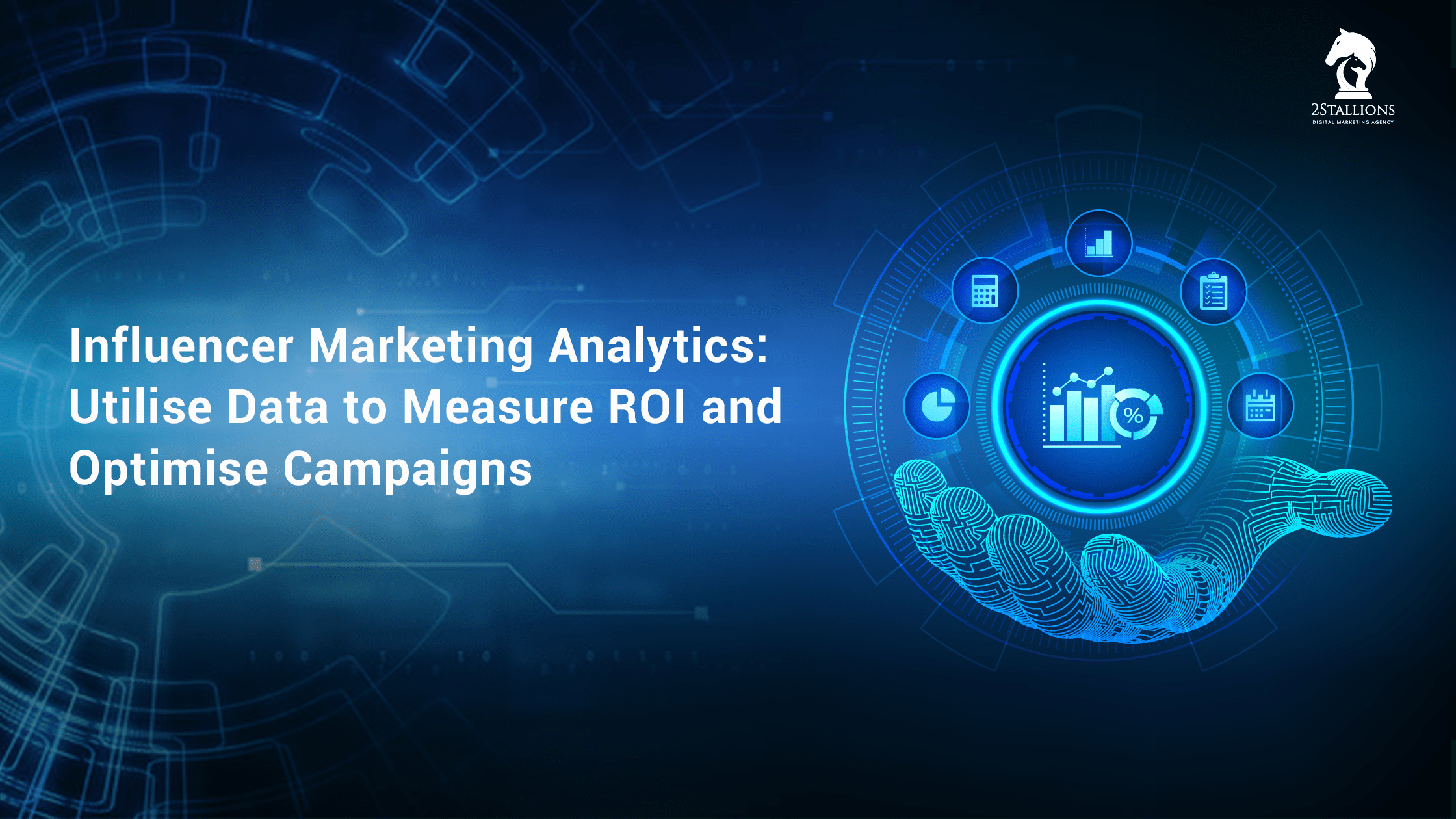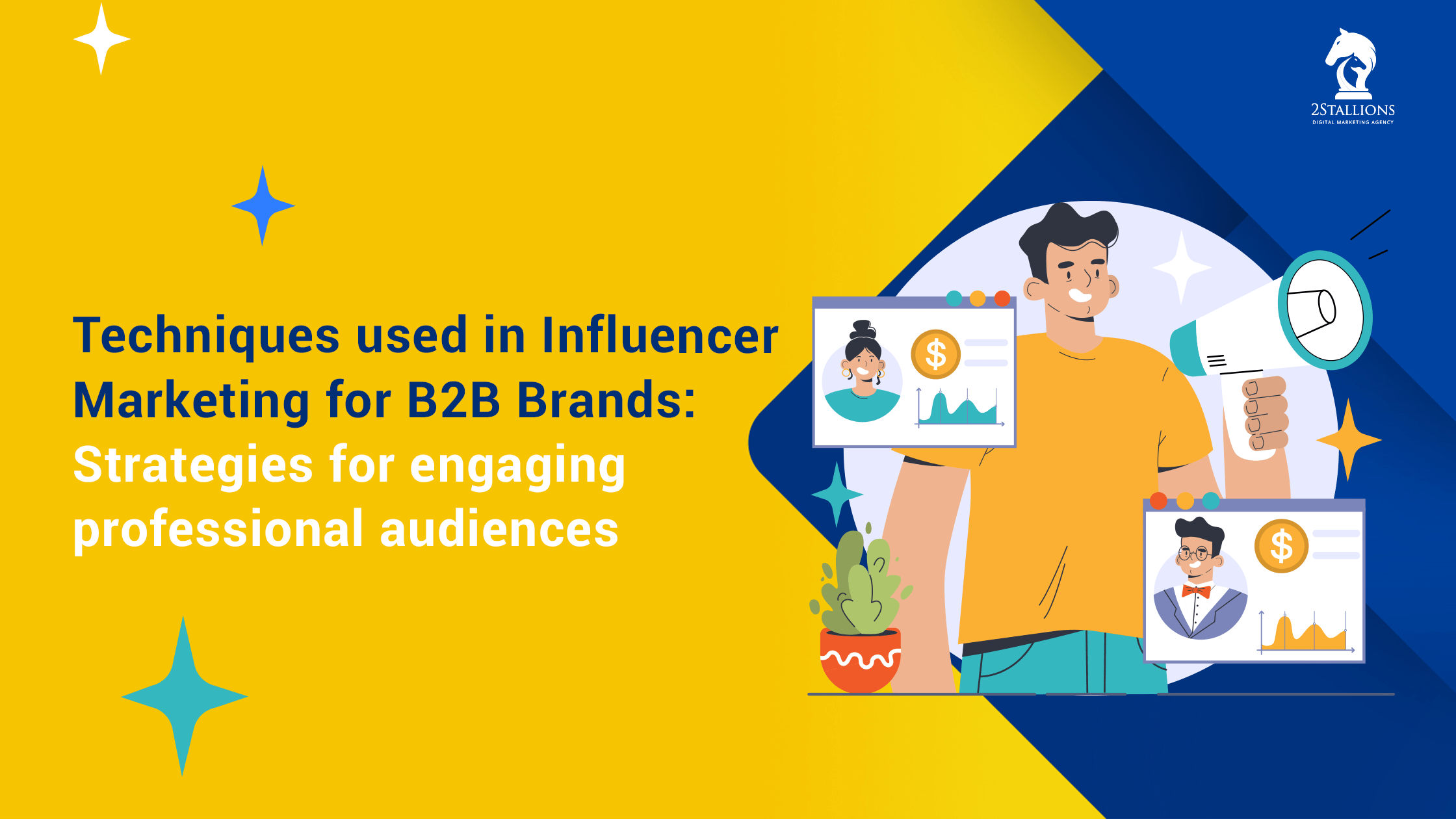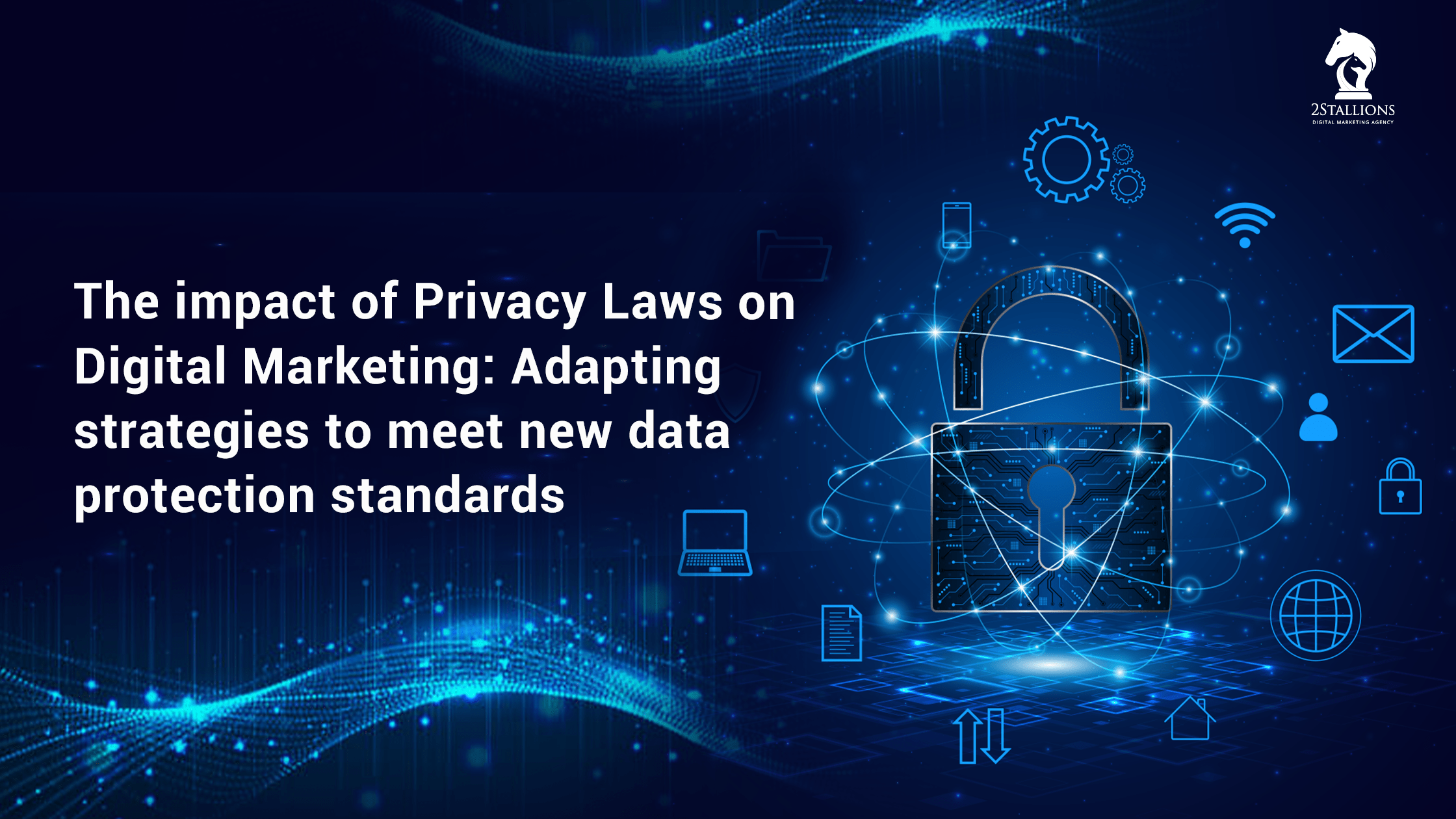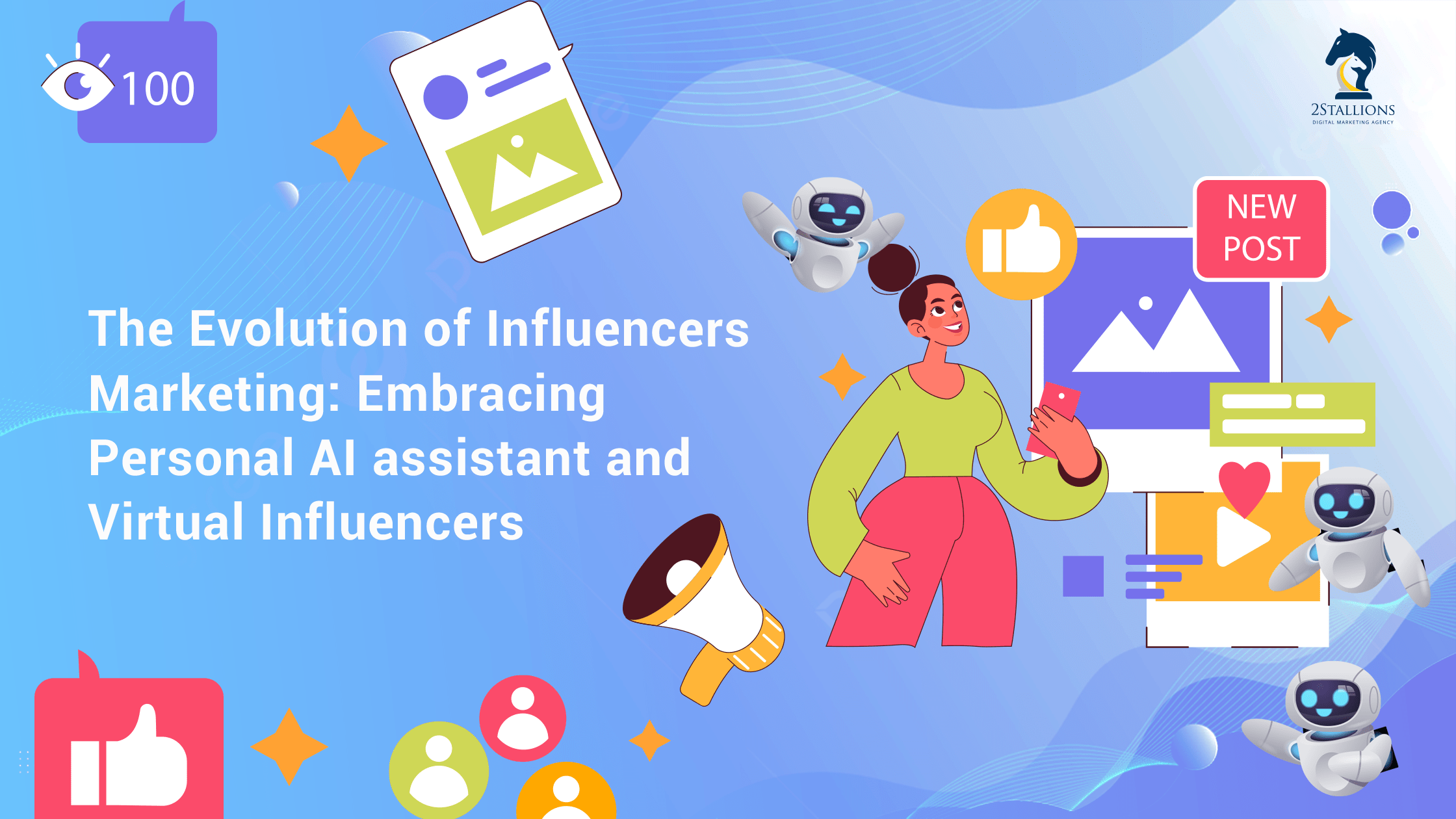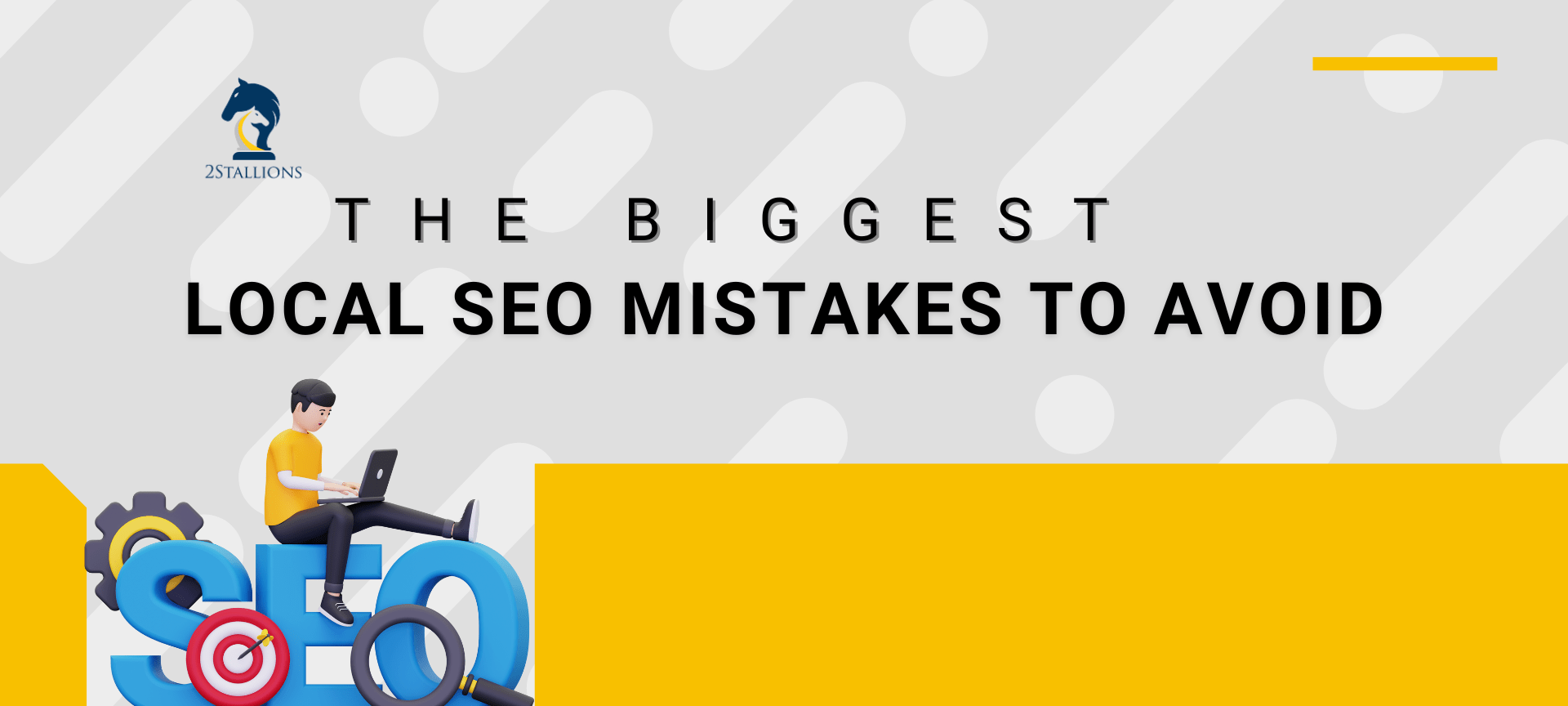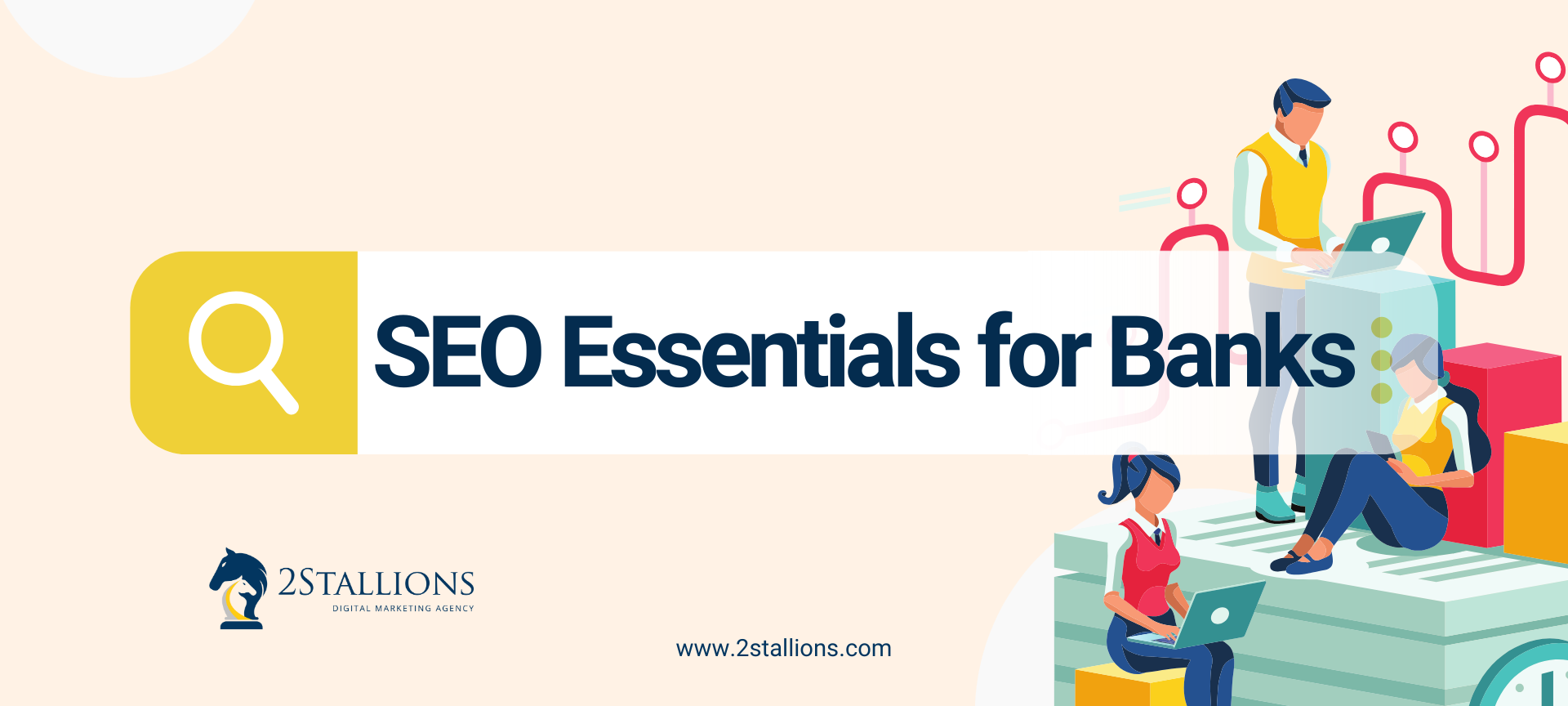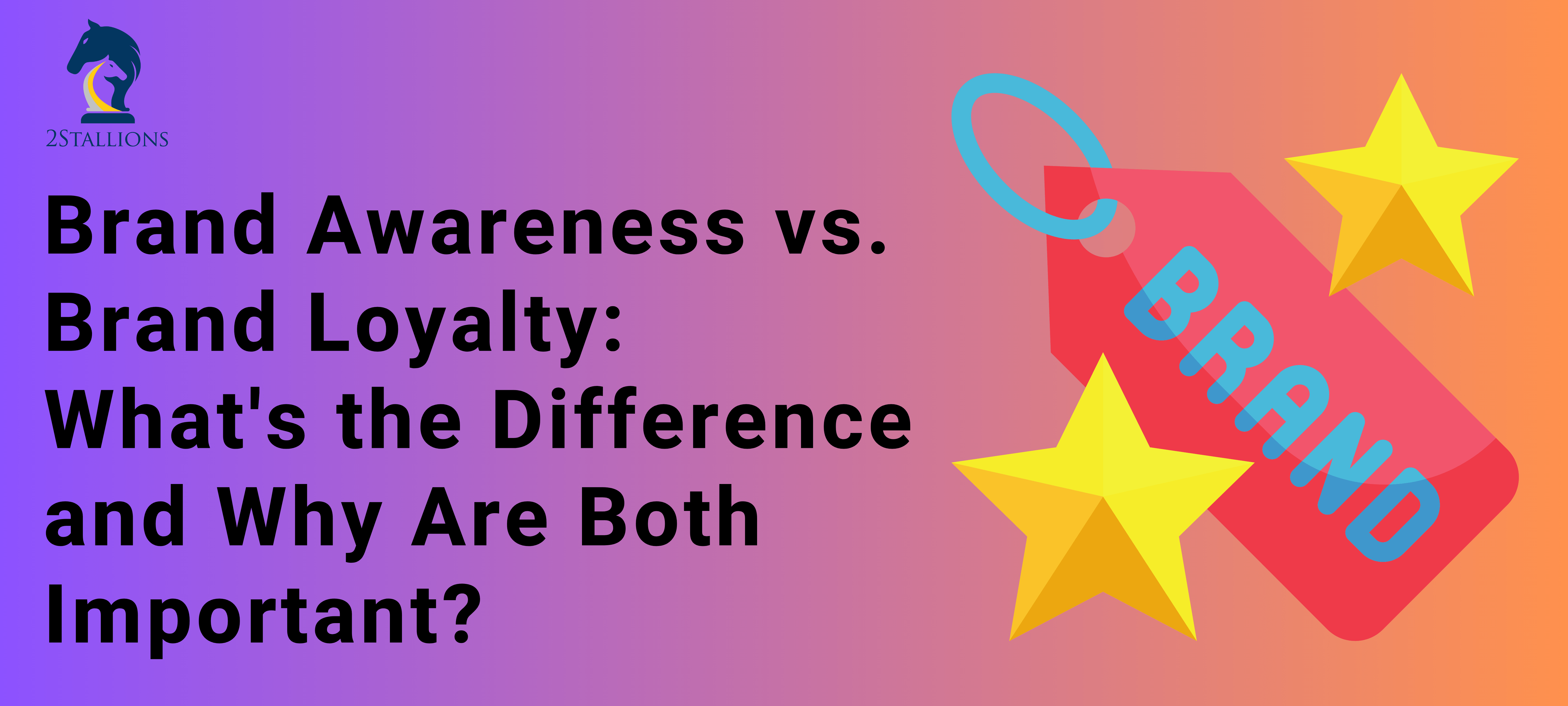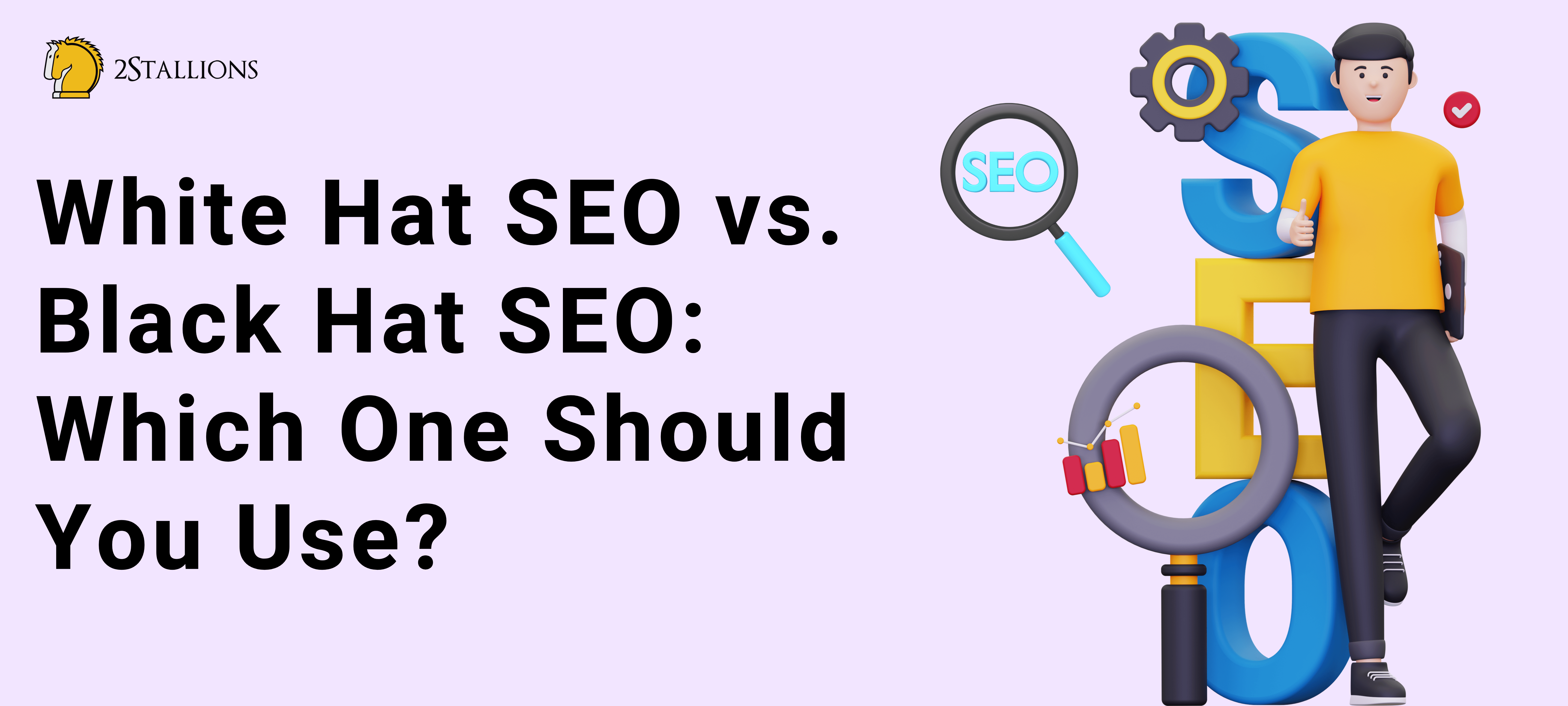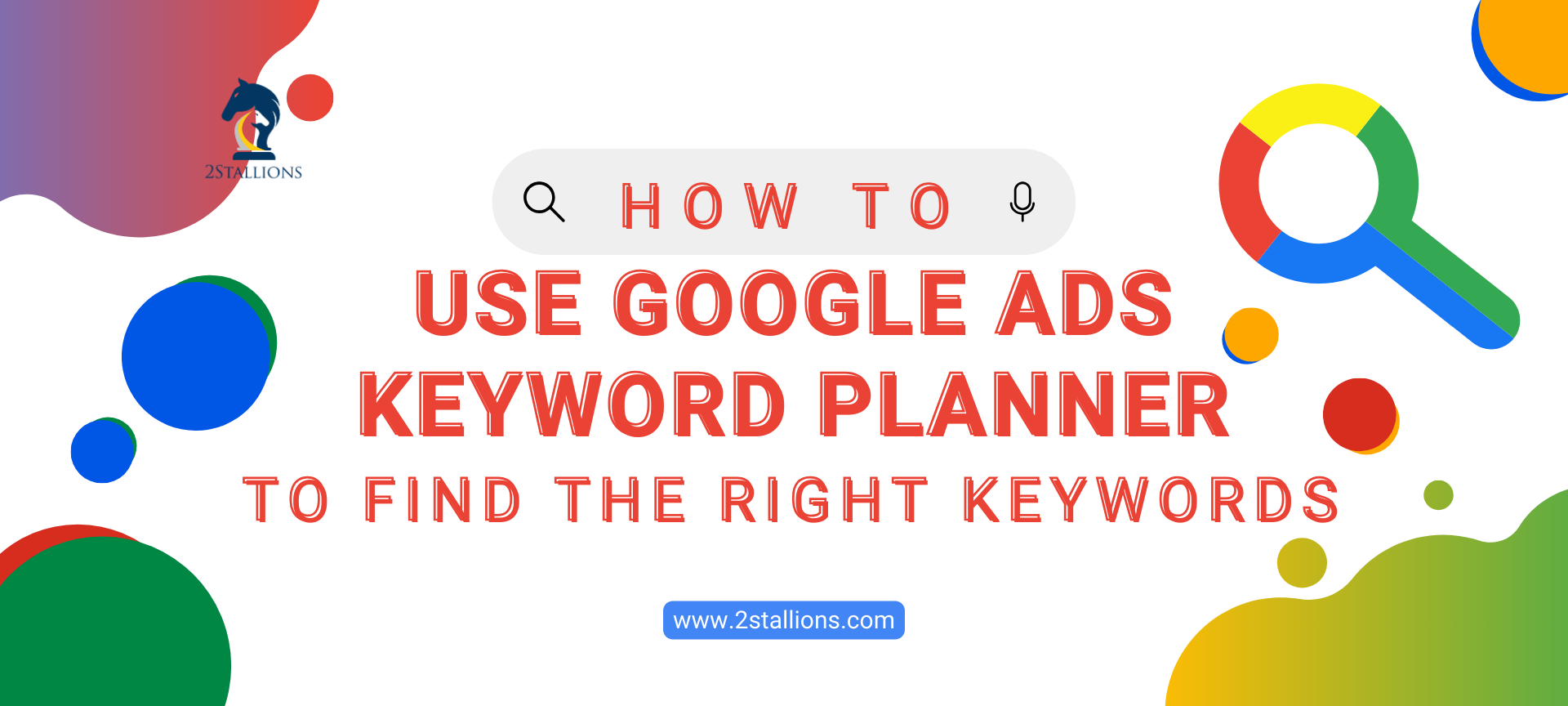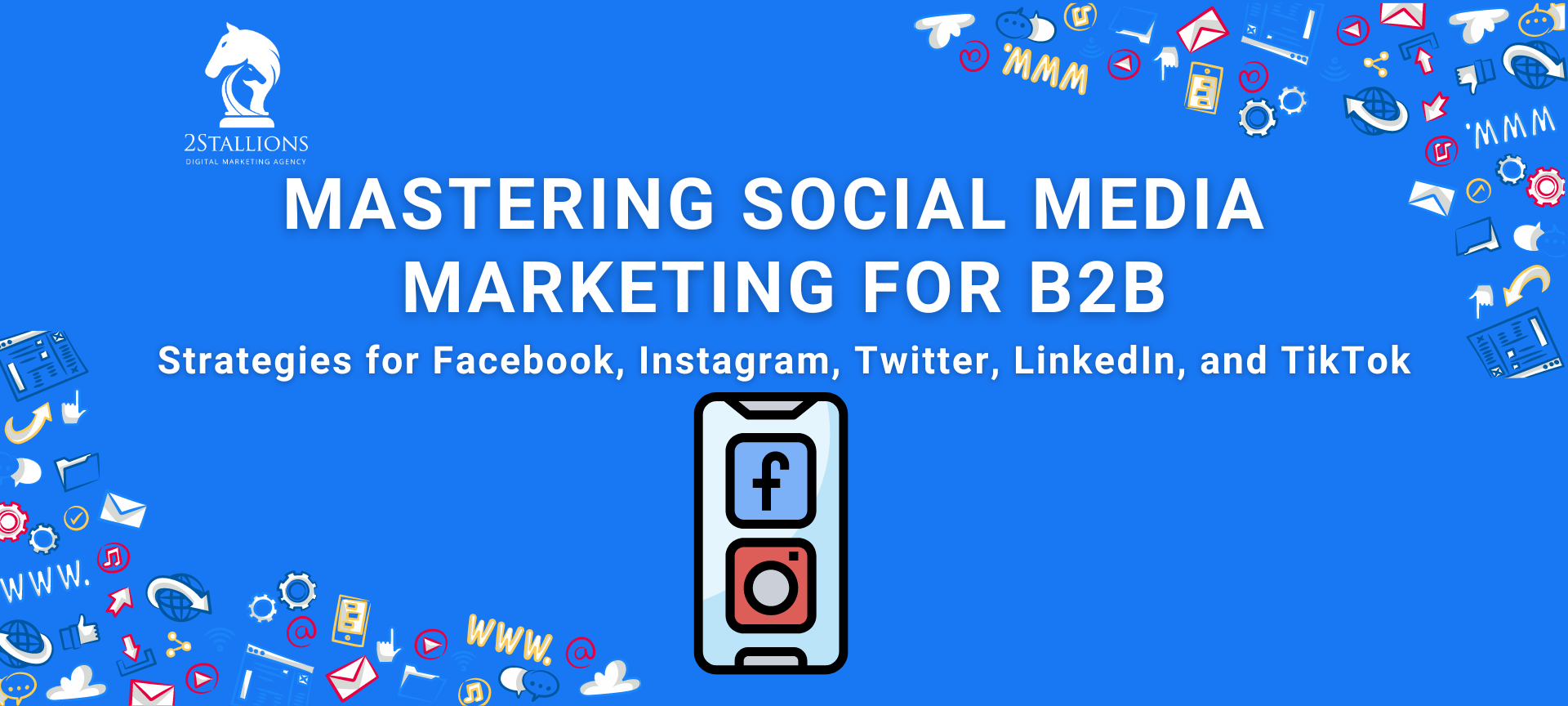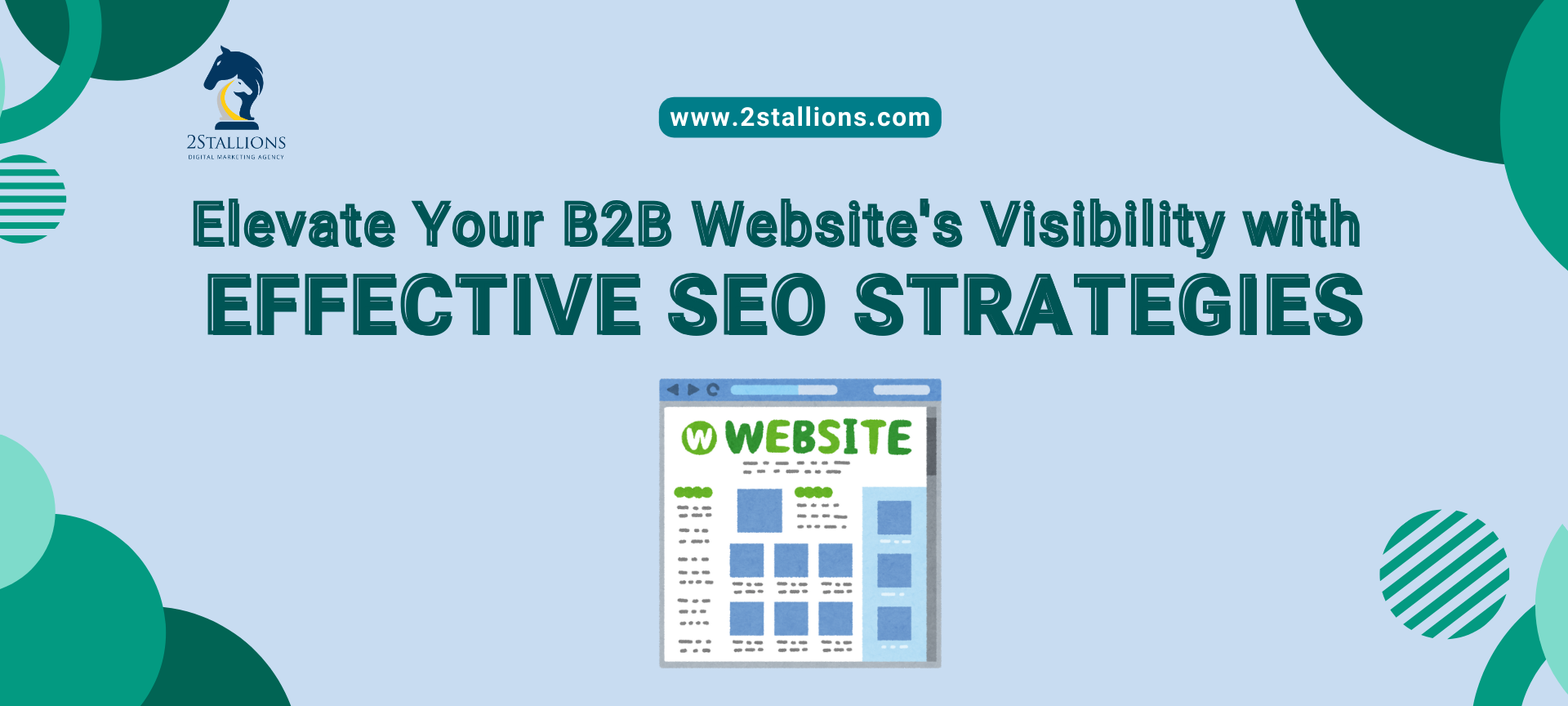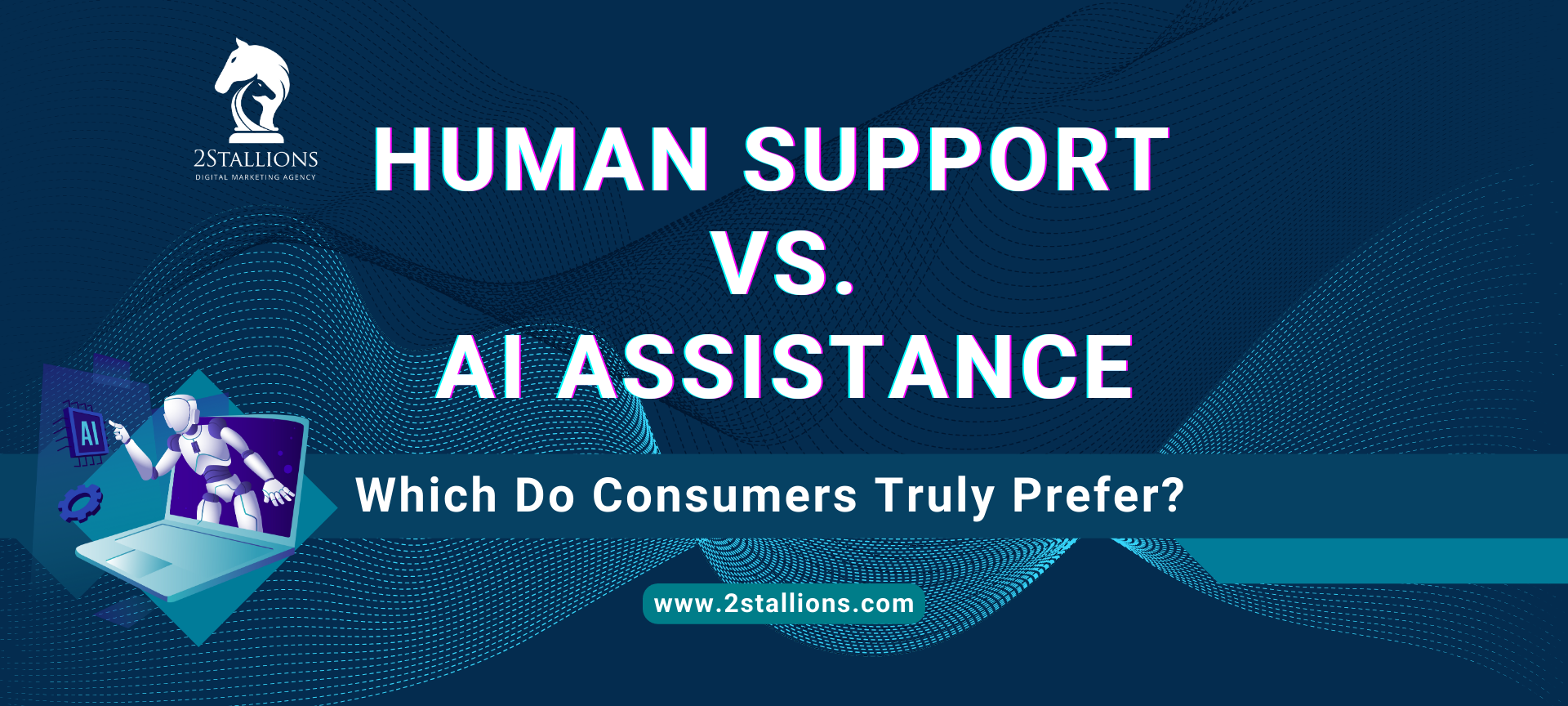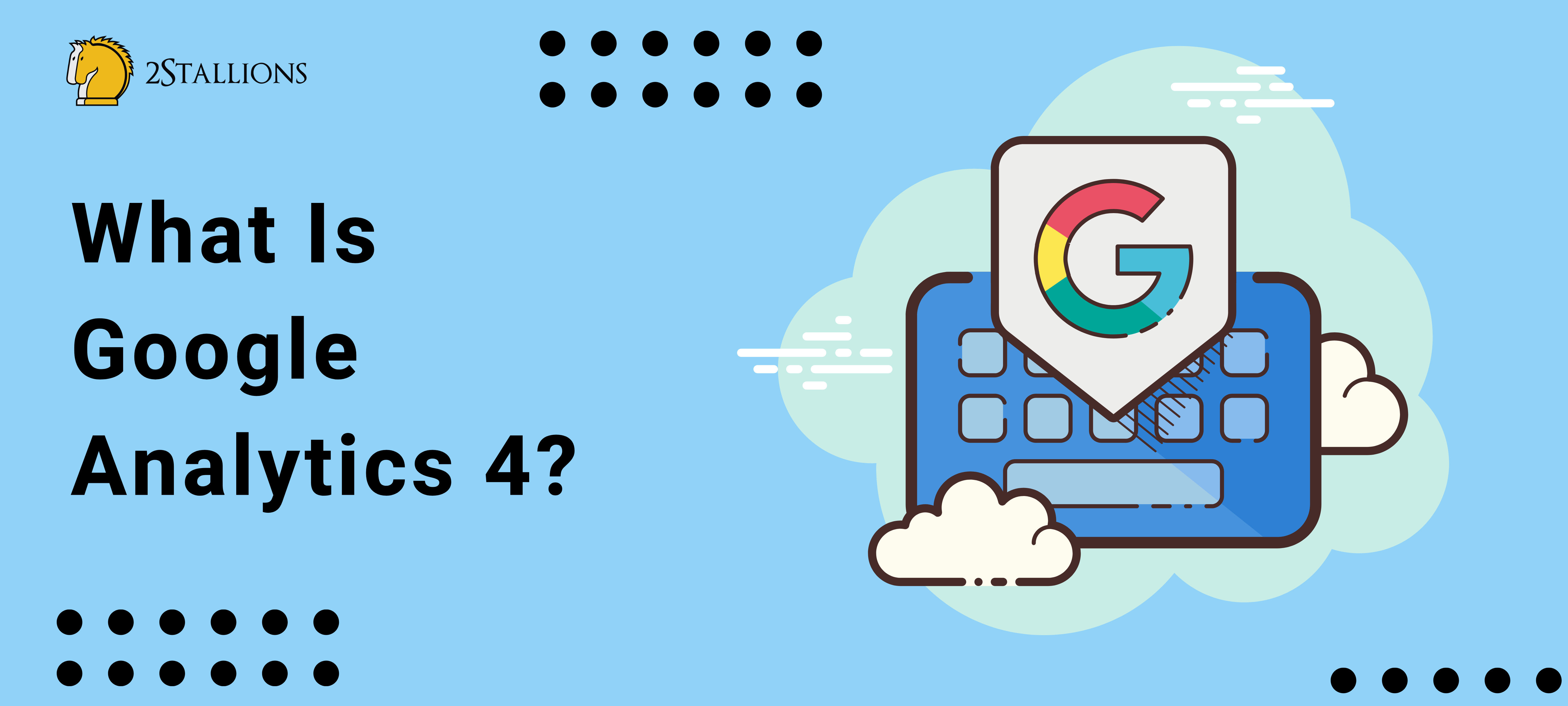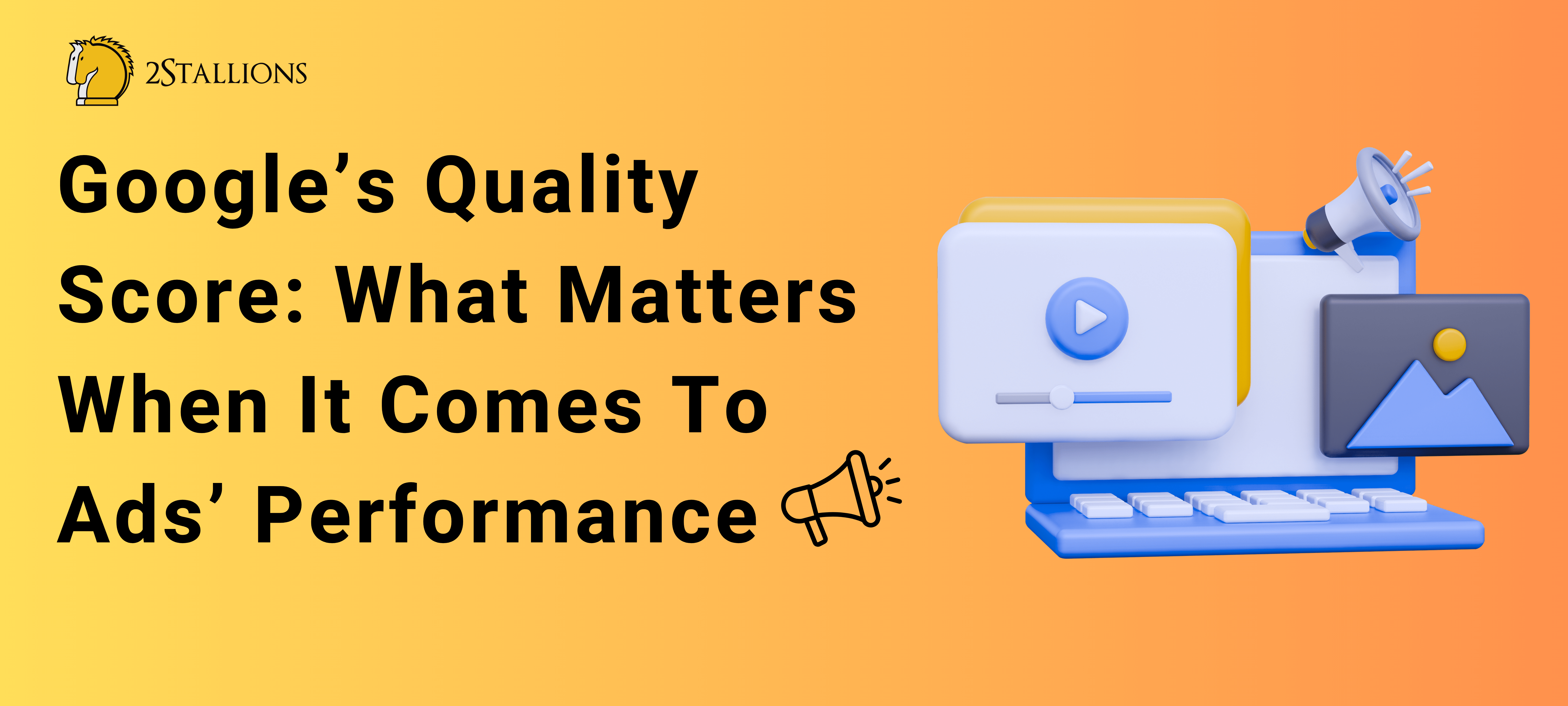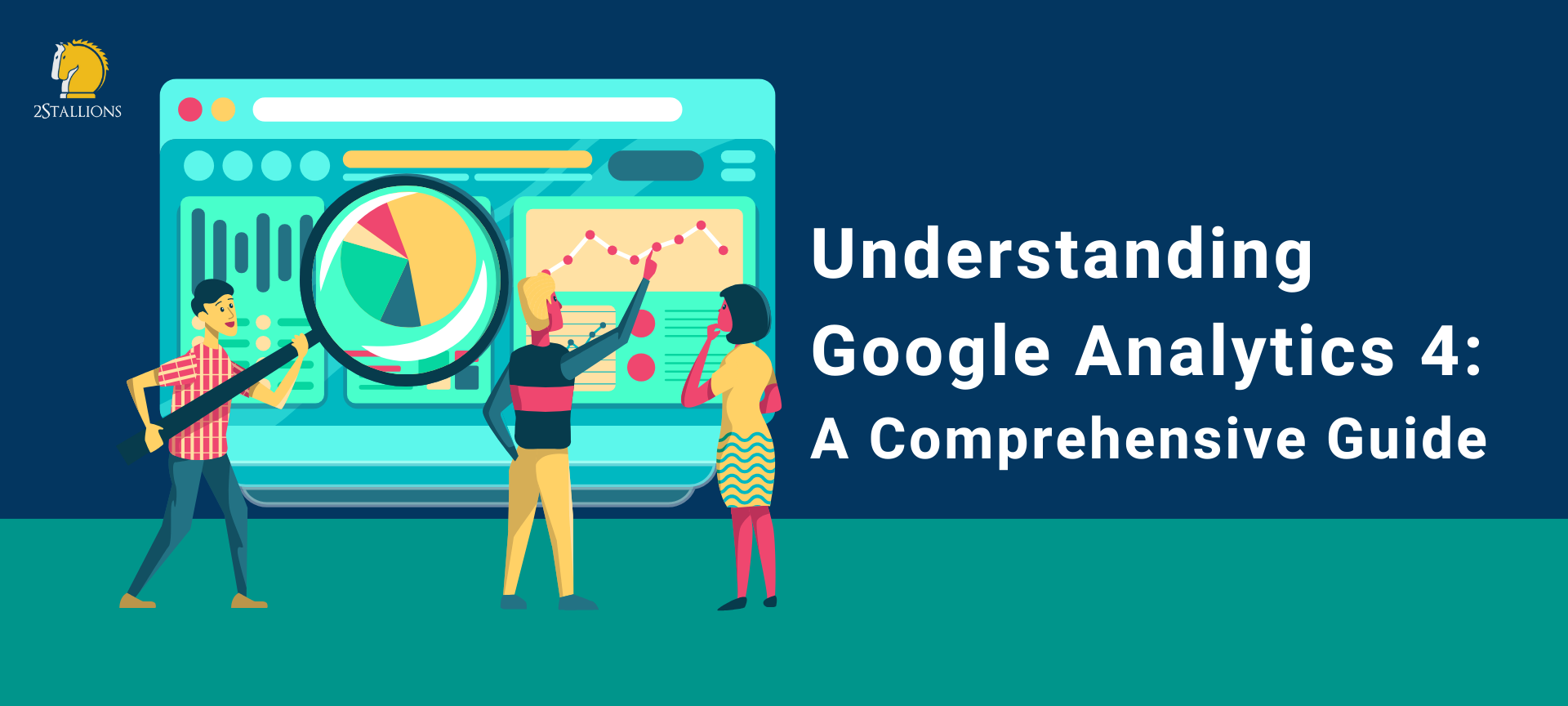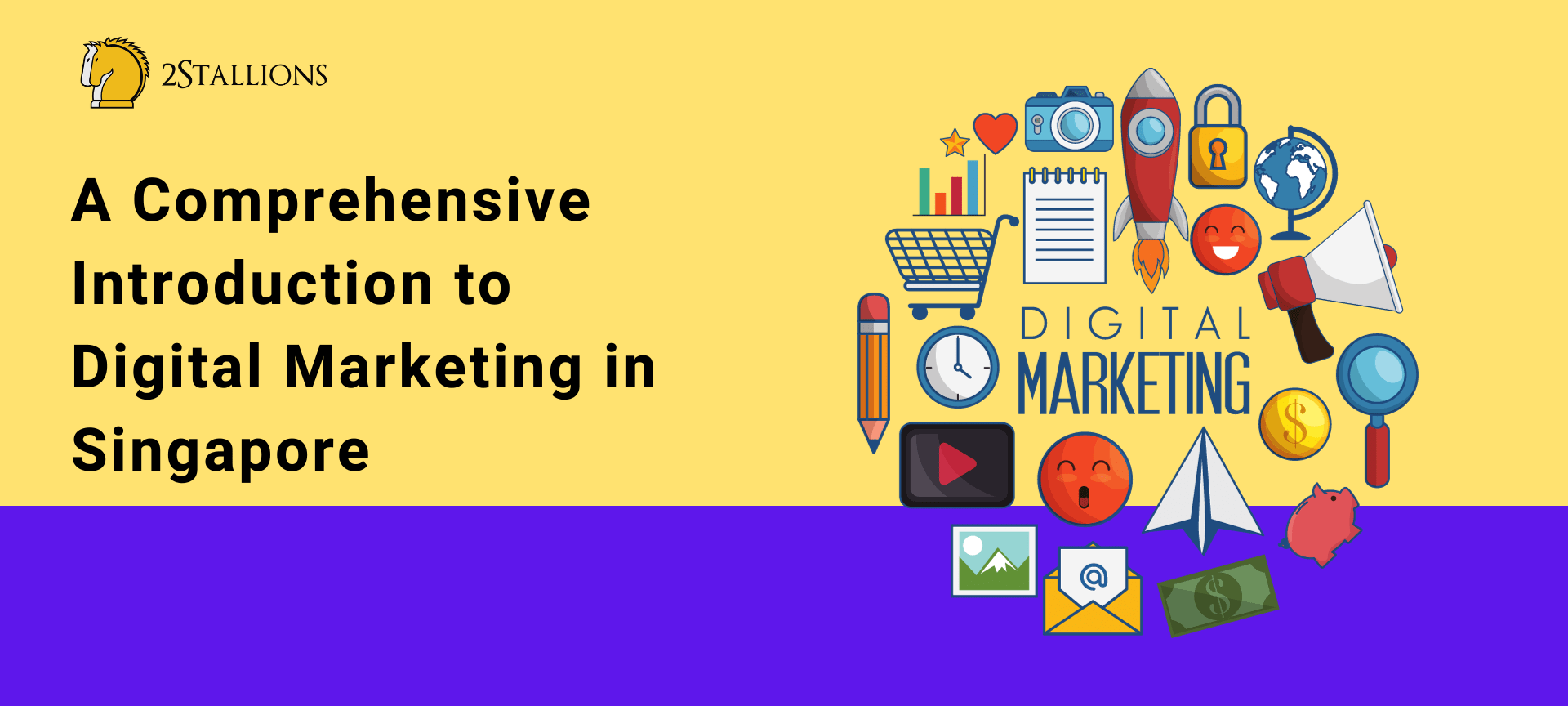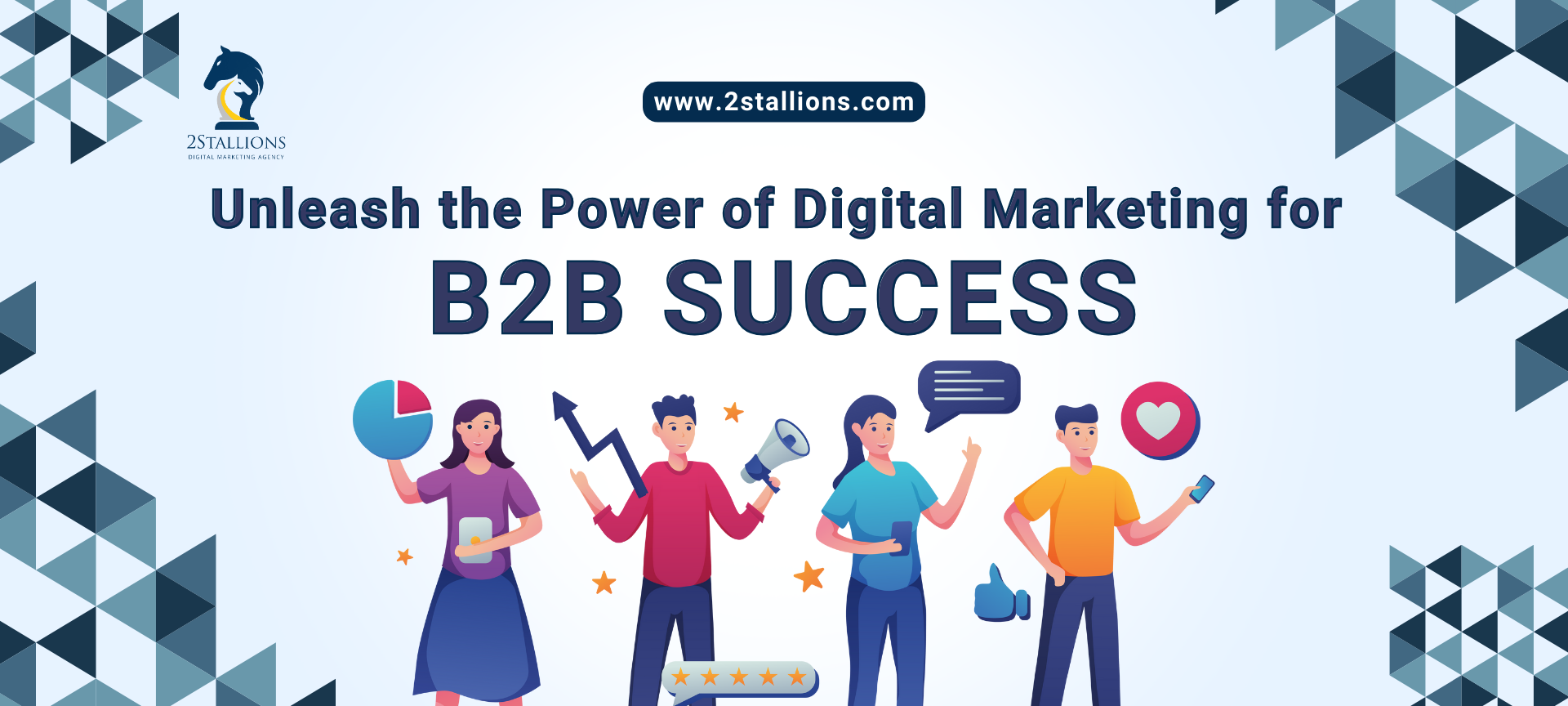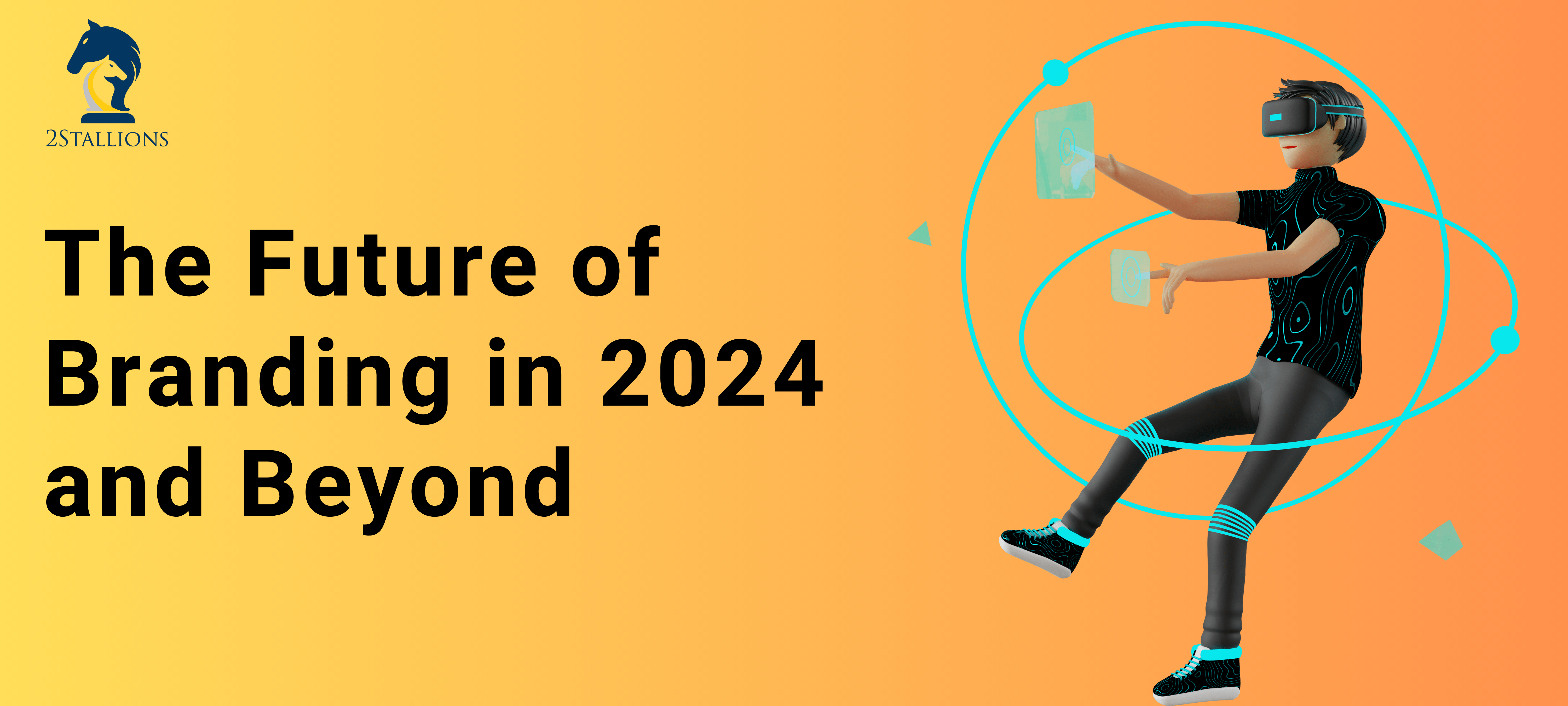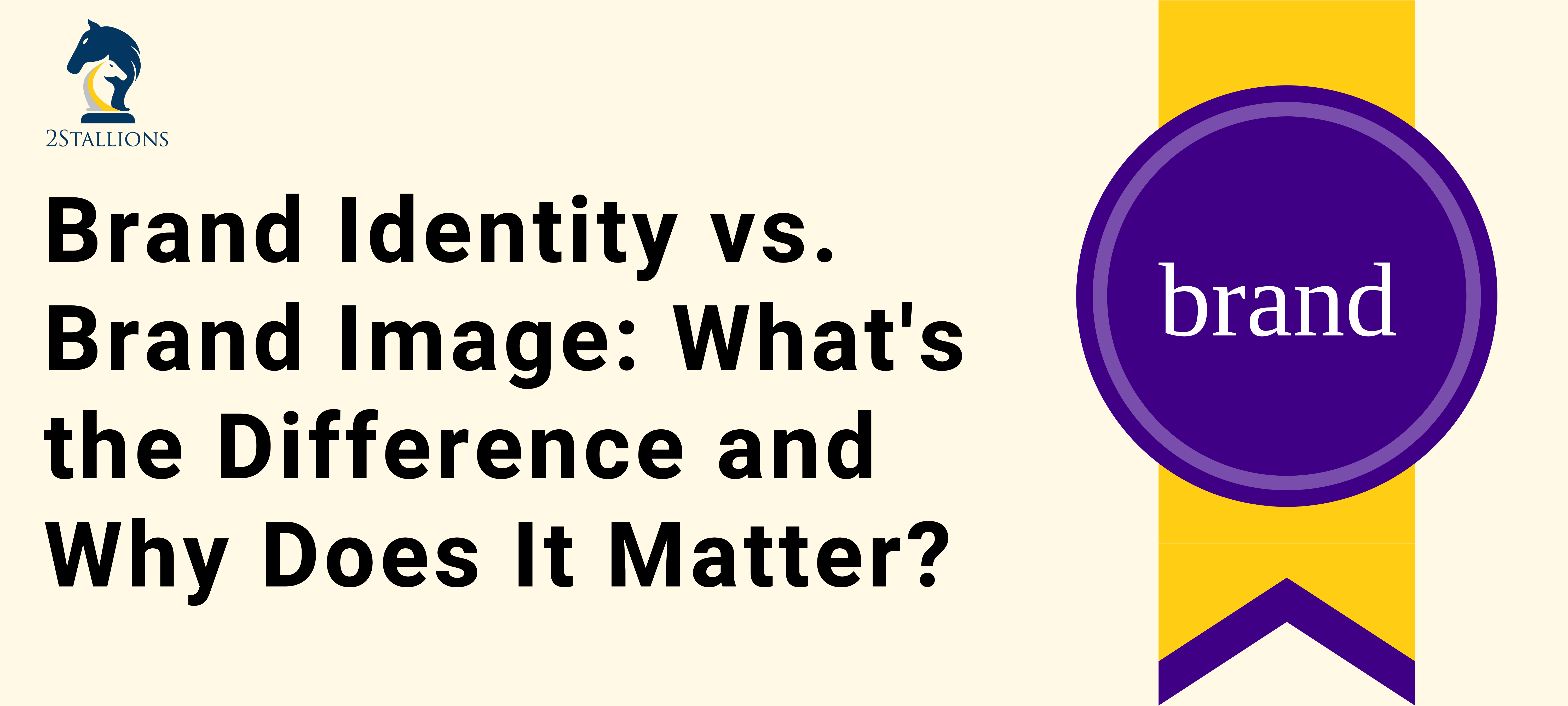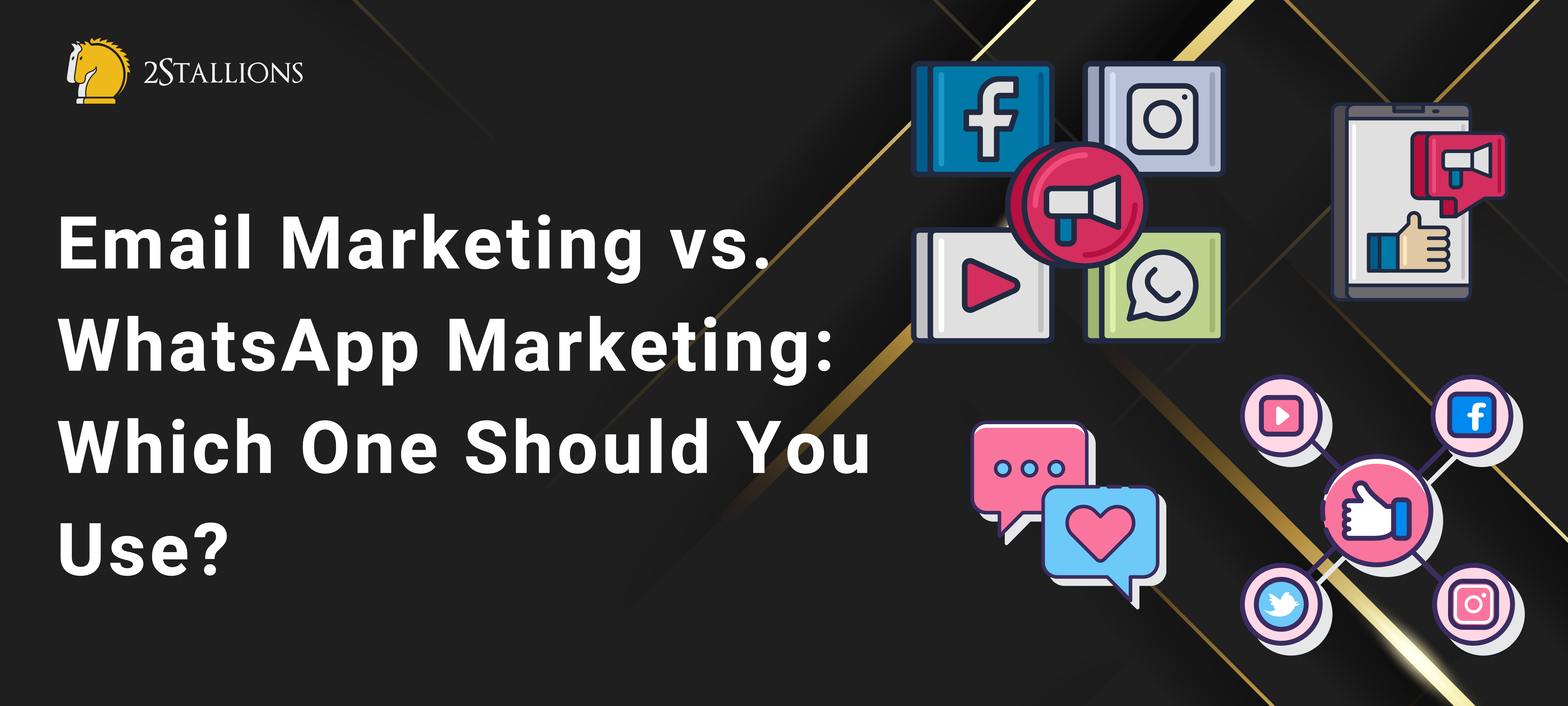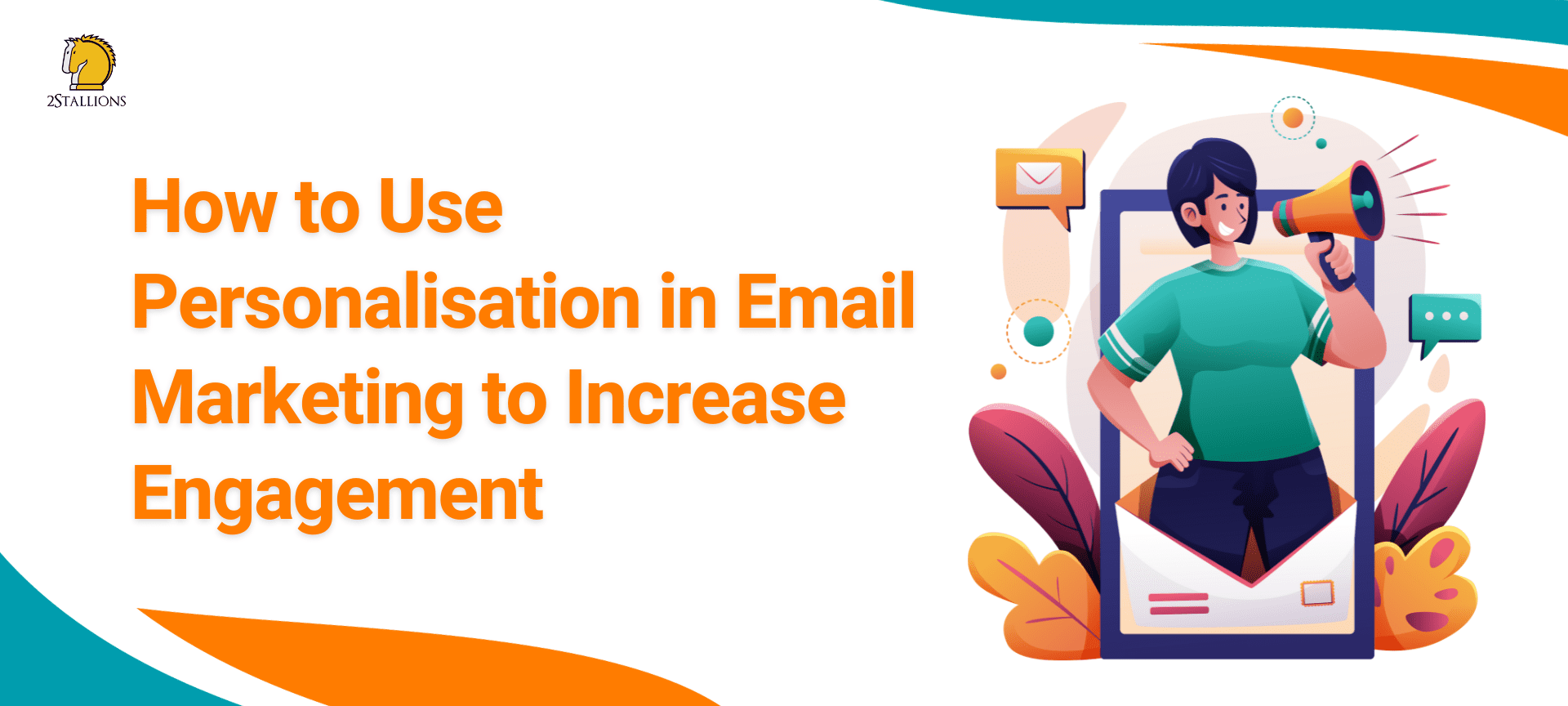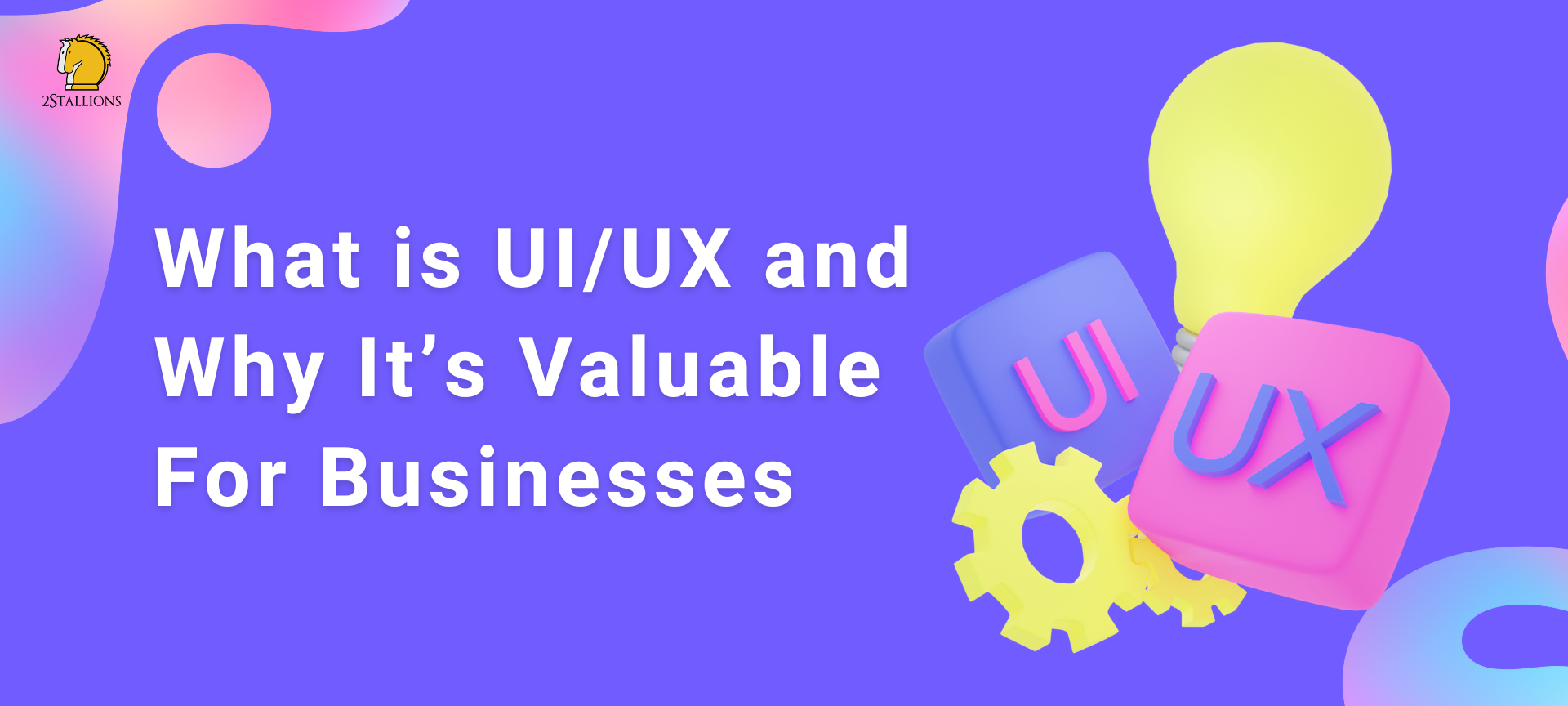Frequently asked questions
Frequently Asked Questions about Digital Marketing
Digital marketing refers to the use of digital channels, platforms, and tools to promote and advertise products, services, and brands. This encompasses a wide range of online activities, from social media and email marketing to search engine optimisation and pay-per-click advertising.
The benefits of digital marketing include increased brand awareness, better audience targeting, measurable results, cost-effectiveness, higher engagement rates, and the ability to adapt quickly to market changes.
Digital marketing is crucial because it allows businesses to reach a global audience, target specific demographics, measure campaign performance in real-time, and achieve higher engagement and conversion rates.
Yes, digital marketing is relevant for all businesses, regardless of size or industry, as it helps in reaching a wider audience, improving brand visibility, and driving sales through cost-effective and measurable strategies.
Digital marketing encompasses various types, including Search Engine Optimisation (SEO), Pay-Per-Click (PPC) advertising, Content Marketing, Social Media Marketing, Email Marketing, Affiliate Marketing, and Online PR.
Digital marketing is vital because it allows businesses to target specific audiences, measure campaign performance in real-time, and adjust strategies instantly. It offers a cost-effective way to engage with potential customers, build brand loyalty, and increase sales.
Performance marketing is a comprehensive term that refers to online marketing and advertising programmes in which advertisers pay marketing companies (often referred to as publishers or affiliates) when a specific action, such as a sale or lead, is completed.
Online marketing, much like digital marketing, involves using the internet to promote products and services. It can include tactics like SEO, PPC, email marketing, and social media marketing.
Internet marketing, synonymous with online marketing, uses the web and email to drive direct sales through electronic commerce, alongside sales leads from websites or emails.
A marketing funnel represents the journey potential customers go through from the first interaction with a brand to the final purchase decision. It’s structured in stages, typically Awareness, Consideration, Decision, and Action.
To create a marketing funnel, start by identifying your target audience’s pain points and information needs. Then, develop content and campaigns tailored to each stage of the funnel, ensuring you guide prospects from awareness to conversion.
Building an effective content marketing funnel requires understanding your audience’s journey. Start by creating awareness content to attract prospects, followed by consideration content that addresses specific needs or questions. Finally, offer decision content that presents your solution and compels them to take action.
Digital convergence refers to the merging of previously distinct technologies, services, and industries due to digitisation and connectivity, allowing them to work together seamlessly.
Marketing tools streamline and automate tasks, provide valuable insights, enhance strategy efficiency, and increase the potential for achieving better results. They assist businesses in effectively targeting their audience, analysing performance, and adjusting strategies based on real-time feedback.
Online marketing can be categorised into several types, including SEO, PPC, Social Media Marketing, Email Marketing, Content Marketing, Affiliate Marketing, and Display Advertising.
Organic search refers to unpaid search results based on their relevance to the user’s query, as opposed to paid search results where companies pay to have their ads displayed.
Mobile marketing involves marketing strategies and campaigns specifically designed for delivery to mobile devices, such as smartphones and tablets. This can include SMS campaigns, mobile-optimised websites, mobile apps, and location-based promotions.
Frequently Asked Questions about Marketing Strategy
A digital marketing strategy is a plan that outlines how a business will achieve its marketing goals using online channels such as search engines, social media, email, and websites to reach and engage with the target audience.
A digital campaign is a coordinated series of digital marketing actions aimed at achieving specific objectives, such as increasing brand awareness, driving traffic, or generating leads, using various online channels like social media, email, and search engines.
Useful Articles
Frequently Asked Questions about SEO
SEO, or Search Engine Optimisation, involves optimising a website to increase its visibility in search engine results pages (SERPs) for specific keywords. This can lead to increased organic (unpaid) traffic to a site.
SEO enhances a website’s visibility in organic search results, leading to increased traffic, credibility, and potentially higher conversion rates. It provides a cost-effective way to reach a targeted audience and gain a competitive edge.
SEO tools assist in researching, analysing, and optimising websites. Examples include Google Analytics, SEMrush, Ahrefs, Moz, and Screaming Frog.
Google Search Console (GSC) is a free service offered by Google that helps website owners monitor, maintain, and troubleshoot their site’s presence in Google search results.
Rank higher on Google by optimising content for relevant keywords, improving site speed, ensuring mobile responsiveness, acquiring quality backlinks, and offering a great user experience.
Use online tools like Ahrefs, SEMrush, or Google Search Console’s performance report to check a website’s ranking for specific keywords.
To improve SEO, focus on creating high-quality content, optimising meta tags, ensuring a mobile-friendly site, building backlinks, and continually monitoring and refining your strategy based on performance metrics.
Use tools like SEMrush, Ahrefs, or Google Search Console to monitor keyword rankings and track how your site performs in search results over time.
Increase SEO by enhancing on-page elements, producing quality content, fostering genuine backlinks, ensuring fast page load times, and regularly auditing your site for improvements.
On-page SEO refers to optimising individual web pages to rank higher and earn more relevant traffic. This includes optimising content, HTML source code, and meta tags.
On-page optimisation involves refining web pages to rank better in search results, focusing on content, meta tags, URL structure, internal links, and other elements on the page.
Off-page SEO involves actions taken outside of your own website to impact rankings within SERPs. This primarily refers to building high-quality backlinks but also includes social signals and other external engagement signals.
Offsite SEO, often known as off-page SEO, pertains to actions taken outside of your website that affect your site’s trustworthiness, relevance, authority, and, consequently, its search rankings. This primarily involves building backlinks from other sites.
Technical SEO pertains to improving the technical aspects of a website to enhance its position in the search rankings. It includes site speed optimisation, mobile-friendliness, site architecture, and indexing.
Video SEO involves optimising video content to increase its visibility in search engines. This includes using relevant titles, descriptions, and tags, as well as optimising video transcripts and sitemaps.
Video can enhance SEO by increasing user engagement, reducing bounce rates, and providing diverse content. Search engines may also display video snippets in search results, attracting more clicks.
Local SEO aims to optimise a business’s online presence to attract more customers from relevant local searches, often in relation to Google Maps or other location-based services.
Local SEO involves optimising your online presence to attract more business from local searches. This includes claiming and optimising your Google My Business listing, gathering positive reviews, and ensuring consistent NAP (Name, Address, Phone) information across platforms.
Image SEO involves optimising images on a website, making them easily discoverable by search engines. This can be achieved through using appropriate file names, alt tags, and ensuring fast load times.
Mobile SEO focuses on optimising a website to ensure it’s easily accessible and user-friendly on mobile devices.
Enterprise SEO involves strategies tailored for large organisations with complex websites. It often involves coordinating various teams and integrating different business systems to achieve scalable SEO success.
International SEO focuses on optimising content for multiple countries and languages, ensuring search engines correctly display the right version to the right audience.
YouTube SEO involves optimising video content, descriptions, tags, and channels to rank higher in YouTube’s search results for specific keywords.
A backlink is a link from one website to another. Quality backlinks from authoritative sites can boost a website’s SEO, signalling to search engines that the site has valuable content.
Link building is the process of acquiring hyperlinks from other websites to your own, aiming to improve search engine rankings.
Obtain backlinks through methods such as guest posting, creating high-quality shareable content, outreach to relevant websites, and participating in industry forums or communities.
Obtain free backlinks by creating shareable content, engaging in guest blogging, performing outreach to websites that mention your content but don’t link, or using social media to share and promote content, which can lead to organic backlink opportunities.
Create backlinks by producing high-quality content others want to reference, collaborating with influencers, guest posting on reputable sites, and actively participating in relevant online communities.
Inbound links, also known as backlinks, are links coming from another website to your site.
Dofollow backlinks allow search engines to follow them and reach the linked website, passing on link equity and potentially boosting its SEO.
Duplicate content refers to blocks of content that either completely match or are very similar to other content available on the web, which can negatively affect a site’s SEO.
Black hat SEO refers to aggressive techniques that violate search engine guidelines and can result in penalties. Examples include keyword stuffing, cloaking, and using private link networks.
White hat SEO refers to ethical techniques that follow search engine guidelines and best practices, focusing on providing value to human audiences.
Cloaking is a black hat SEO technique where the content presented to search engine crawlers is different from that shown to users, attempting to deceive search engines to rank the content better.
E-commerce SEO pertains to optimising online storefronts and product pages to increase visibility in search engine results, driving sales.
Shopify SEO involves optimising an online store built on the Shopify platform for search engines, enhancing visibility and driving organic traffic.
SEO writing involves crafting content with the goal of attracting search engine traffic, and incorporating relevant keywords in a natural and reader-friendly manner.
SEO content is content written with the goal of attracting search engine traffic, ensuring it addresses the needs of users and contains relevant keywords.
Write SEO-friendly content by focusing on user intent, naturally integrating target keywords, ensuring readability, providing value, and structuring content effectively with headings and subheadings.
SEO content writing is the process of creating content with a focus on including targeted keywords and phrases while ensuring the content is high quality, user-friendly, and valuable to readers.
SEO copywriting involves crafting content that both appeals to readers and includes specific keywords or phrases to rank well in search engines.
Write SEO content by understanding your audience, incorporating relevant keywords naturally, creating engaging and valuable content, and ensuring it’s easily readable and well-structured.
SERP stands for Search Engine Results Page.
SERP stands for Search Engine Results Page. It’s the page displayed by a search engine in response to a user’s search query.
Website SEO involves optimising a website as a whole, including its structure, content, and technical elements, to improve its visibility in search engine results.
A landing page in SEO is a dedicated web page designed to receive and convert traffic from a specific marketing or advertising campaign.
Title tags define the title of a web page and are an important on-page SEO factor. They appear in search engine results and browser tabs, giving users a quick insight into the content of a page.
The meta title, often referred to as the title tag, is an HTML element specifying the title of a web page. It’s a primary factor in on-page SEO and appears in search engine results as the clickable headline for a given search result.
A meta title, or title tag, should ideally be between 50-60 characters long to ensure it displays fully in search results without being cut off.
A web page title, also known as a title tag, defines the title of a webpage and is displayed on search engine results pages (SERPs) as the clickable headline for a given result.
The title tag should be between 50-60 characters long to best display in search results without truncation.
A keyword in SEO is a term or phrase that users enter into search engines. Websites aim to optimise content around these keywords to appear in relevant search results.
Keyword research involves using tools like Google Keyword Planner, SEMrush, or Ahrefs to identify popular search terms related to your topic. It’s about understanding what your audience is searching for, the search volume, and the competition around those keywords.
Long-tail keywords are more specific, often longer keyword phrases that visitors are likely to use when closer to a purchase or when using voice search.
Use keyword research tools like Google Keyword Planner, Ubersuggest, or Ahrefs’ Keyword Explorer. Analysing competitor content and monitoring audience queries can also yield valuable long tail keywords.
LSI (Latent Semantic Indexing) keywords are terms related to the main keyword. They provide context and help search engines understand content better.
LSI (Latent Semantic Indexing) keywords can be found using tools like SEMrush, Ahrefs, or even the “Searches related to…” section at the bottom of Google search results.
Use keyword research tools, analyse competitor content, look at autocomplete suggestions in search engines, and consider user intent to find relevant keywords.
The SEO title, also known as the title tag, is an HTML element that specifies the title of a web page, optimised with keywords for search engines.
Schema, or Schema.org, is a collaborative project that creates, maintains, and promotes schemas for structured data on the Internet.
Schema markup is a code added to a website to help search engines provide more detailed results for users, enhancing the richness of SERPs.
In SEO, schema refers to specific markup languages recommended by search engines to provide more accurate and detailed results. It helps search engines understand the context and structure of your content.
Meta tags are snippets of text that describe a webpage’s content. They don’t appear on the page itself but are part of the page’s HTML. They inform and provide data to search engines about the content of the page.
A meta tag in SEO provides metadata about the contents of a page, including descriptions (meta descriptions), keywords, and authorship, which search engines can use to understand the content’s context.
Meta keywords are a type of meta tag that website owners used to provide search engines with a list of keywords relevant to their content. However, they are now largely ignored by major search engines due to overuse and misuse.
A meta description is an HTML attribute that offers a brief summary of a webpage’s content. It appears under the title in search engine results and aims to inform and entice readers about the page’s content.
Write a meta description that is concise (typically under 160 characters), relevant to the page’s content, includes target keywords, and encourages users to click through from the search results.
Rich snippets are enhanced search results that display extra information, like star ratings, product prices, or event times, pulled from structured data on a webpage.
An SEO audit is a thorough analysis of a website to assess its ability to appear in search engine results pages, identifying strengths, weaknesses, and opportunities for improvement.
Perform an SEO audit by checking technical aspects (like site speed and mobile-friendliness), on-page elements (like meta tags), off-page factors (like backlinks), and user experience.
In SEO, indexing refers to the process where search engines scan and add a page to their database, making it discoverable through search.
International SEO involves optimising your website for multiple countries or languages. This can involve hreflang tags, country-specific domains, and content tailored to different cultural contexts.
SEO best practices are guidelines and strategies that are recognised as effective ways to optimise a website for search engines and users.
A technical SEO audit assesses the technical aspects of a site, like site speed, mobile optimisation, XML sitemaps, robots.txt files, indexing issues, and structured data.
SEO (Search Engine Optimisation) focuses on organic (unpaid) strategies to increase visibility in search results, while SEM (Search Engine Marketing) involves paid advertising strategies like Google Ads to gain visibility in search results.
SEO (Search Engine Optimisation) focuses on enhancing organic (unpaid) search visibility through various strategies, while SEM (Search Engine Marketing) encompasses both organic optimisation and paid search advertising campaigns like PPC (Pay-per-click).
Alt text for images should be concise while accurately describing the image, typically around 125 characters or less.
Frequently Asked Questions about Paid Ads
SEM (Search Engine Marketing) is a broad digital marketing strategy used to increase visibility in search engine results pages, primarily through paid advertising.
Search Engine Marketing (SEM) is a digital marketing approach aimed at increasing a website’s visibility in search engine results pages through both organic optimisation and paid advertising strategies.
Search Engine Marketing offers instant visibility in search results, access to a vast audience, precise targeting capabilities, measurable results, and a competitive advantage against businesses not leveraging SEM.
PPC (Pay-Per-Click) is a specific type of SEM where advertisers pay a fee each time their ad is clicked.
PPC, or Pay-Per-Click, in digital marketing refers to an online advertising model where advertisers pay a fee each time their advertisement is clicked by a user. It’s a way to buy visits to your site rather than attempting to “earn” them organically.
PPC provides immediate traffic, granular targeting (e.g., by location, language, device), detailed performance tracking, control over budget and scheduling, and improved ROI with optimisation over time.
Social media advertising involves using paid advertisements on platforms like Facebook, Instagram, X (Twitter), and LinkedIn to reach specific target audiences, promote products or services, and drive engagement and conversions.
Paid social media advertising involves paying to display advertisements or sponsored content on social media platforms such as Facebook, Instagram, X (Twitter), and LinkedIn.
Social media advertising operates by allowing advertisers to select specific demographics, interests, behaviours, and other criteria to target their ads. Once set up, the ads are then displayed in users’ feeds or designated ad spaces, and performance metrics (like impressions, clicks, and conversions) are tracked for optimisation.
Social media advertising provides advanced targeting options, real-time performance analysis, a vast and engaged audience, versatility in ad format, and the ability to build brand awareness and loyalty.
Digital advertising encompasses all forms of advertising delivered through digital channels, including search engines, websites, social media platforms, email, and mobile apps.
Online advertising is a subset of digital advertising that uses the internet to deliver promotional marketing messages to consumers through various platforms and channels.
Digital advertising encompasses various types, including display ads, search engine ads (PPC), video ads, mobile ads, native advertising, affiliate marketing, email marketing ads, and social media ads.
Online advertising includes search engine advertising (PPC), display advertising (banners), video advertising, native advertising, affiliate marketing, email advertising, and social media promotions.
Search engine advertising (SEA) is a form of paid online advertising that promotes content on search engine result pages. It typically refers to PPC ads that appear on platforms like Google Ads or Bing Ads.
Display advertising refers to graphical ads, such as banners or video ads, that appear on websites, apps, or social media platforms to promote products, services, or brands.
Useful Articles
Frequently Asked Questions about Google Ads
Google Ads is Google’s online advertising platform where advertisers can display ads, product listings, and service offerings within the Google ad network to web users.
Google Ads includes Search Ads, Display Ads, Video Ads, Shopping Ads, App Promotion Ads, and Discovery Ads.
Google Ads operates on an auction system where advertisers bid on keywords. Ads are displayed based on the bid amount, the ad’s relevance, and quality score. Advertisers are charged only when users click on their ads.
Google Ads provides immediate visibility, precise targeting, measurable ROI, flexible budgeting, and the ability to capture potential customers right when they’re searching.
The cost of Google Ads varies based on factors like competition, keywords, quality score, and bid amount. Advertisers set a budget and only pay when users click on their ads (PPC model).
Google Ads can increase website traffic, drive conversions, enhance brand visibility, reach targeted audiences precisely when they’re searching for relevant products or services, and provide measurable results for optimisation.
Google Ads creates responsive search ads by mixing and matching multiple headlines and descriptions provided by advertisers. Over time, Google tests different combinations and serves the most effective ones more frequently.
Google Ads automated bidding optimises your bids in real-time to achieve the most value out of every conversion, saving time and potentially improving performance.
Google Ads provides immediate visibility, precise targeting, measurable ROI, flexible budgeting, and the ability to capture potential customers right when they’re searching.
Google Ads campaigns can be categorised as Search, Display, Shopping, Video, App, and Discovery.
Extensions enhance ads with additional information. Types include Sitelink, Callout, Structured Snippet, Call, Location, App, Price, and Promotion Extensions.
Dynamic search ads automatically generate ad headlines and landing pages based on the content of a website, targeting searches without relying on specified keywords.
Google Display Ads are graphical ads that appear on Google’s Display Network, which includes a vast array of websites, videos, and apps.
Google Shopping Ads showcase products directly with an image, title, price, and store name, allowing users to compare products right from the search results.
Discovery Ads are visually rich ads that appear on Google’s Discover feed, Gmail, and YouTube, reaching users in the moments when they’re open to discovering new products or services.
Carousel ads allow advertisers to showcase multiple images or videos in a single ad, with users being able to scroll through them.
Text ads are basic advertisements that only include text. They typically contain a headline, description, and a visible URL.
Google AdWords, now known as Google Ads, is Google’s online advertising platform that enables businesses to create and run ads across Google’s network to reach potential customers.
Frequently Asked Questions about Social Media Marketing
Social media marketing involves using social media platforms to promote products or services, engage with customers, and build brand awareness through content sharing, ads, and community interaction.
The benefits of social media marketing in general are:
- Increased Brand Awareness: Helps in getting your business and the products or services you offer in front of your customers and potential customers.
- Higher Traffic: Drives more traffic to your website, which can lead to increased sales and conversions.
- Improved Search Engine Rankings: Social signals (likes, shares, etc.) can indirectly boost SEO efforts.
- Higher Conversion Rates: Social interactions can help build trust and credibility, leading to higher conversion rates.
The advantages of social media marketing include:
- Cost-Effective: It is relatively cheaper than traditional advertising.
- Targeted Advertising: Allows you to target specific demographics.
- Direct Interaction with Customers: Provides a platform for direct communication and customer service.
- Real-Time Performance Analysis: You can track and measure performance instantly.
The benefits of social media marketing for business include:
- Lead Generation: Social media can be a powerful tool for generating leads.
- Customer Insights: Gain valuable data on customer behaviour and preferences.
- Brand Loyalty: Building a strong brand presence on social media helps in increasing brand loyalty.
The benefits of social media marketing for business include:
- Increased brand awareness
- Cost-effective marketing
- Direct customer engagement
- Improved customer loyalty
- Enhanced website traffic
- Access to insights and analytics
- Opportunities for collaboration and partnerships
To successfully do social media marketing:
- Set clear goals and objectives
- Identify your target audience
- Choose the right social media platforms
- Create engaging content
- Schedule regular posts
- Use analytics to track performance
- Engage with your audience
- Run targeted ad campaigns
A social media campaign is a coordinated marketing effort using one or multiple social media platforms to achieve specific business goals, such as increasing brand awareness, driving website traffic, or boosting sales.
SMMA stands for Social Media Marketing Agency, which provides businesses with social media marketing services, including strategy development, content creation, ad management, and performance analysis.
SMM stands for Social Media Marketing, which involves using social media platforms to promote products or services, engage with customers, and build brand awareness.
Social media optimisation (SMO) is the process of enhancing your social media presence to increase brand awareness, drive traffic, and improve engagement by optimizing your profiles, content, and interactions.
A social media marketing strategy is a plan that outlines your goals, target audience, chosen platforms, content types, posting schedule, and metrics for measuring success in social media marketing.
SMM (Social Media Marketing) in digital marketing refers to using social media platforms to promote products or services, engage with customers, and build brand presence as part of a broader digital marketing strategy.
SMO (Social Media Optimization) in digital marketing involves optimizing your social media profiles and content to increase visibility, improve engagement, and drive traffic from social media to your website.
Social media marketing in digital marketing refers to leveraging social media platforms to promote products, engage with customers, and build brand awareness within an overall digital marketing strategy.
- Targeted audience reach
- Increased brand awareness
- Higher engagement rates
- Cost-effective marketing
- Measurable results
- Enhanced website traffic
- Flexibility in ad formats
Frequently Asked Questions about Bing Ads
Bing Ads, now known as Microsoft Advertising, is Microsoft’s online advertising platform. Advertisers can create ads that appear on the Bing, Yahoo!, and MSN networks, including search results and partner sites.
- Less Competition: Fewer advertisers use Bing, which can lead to lower cost-per-click (CPC).
- Lower CPC: Due to less competition, the average CPC on Bing can be lower than on Google.
- Different Audience: Bing may reach a demographic that’s different from Google’s, offering access to a unique audience.
- Granular Control: Advertisers can assign different campaigns to different time zones, and it offers more granular control at the ad group level.
- Device Targeting: Bing allows for more flexibility with device-level targeting.
- Integration with Microsoft Products: There’s potential for enhanced integration with Microsoft’s suite of products and services.
- Search Ads: These are the most common type, appearing next to search results on Bing, Yahoo!, and MSN.
- Product Ads: These display product information directly in the Bing search results, including an image, price, and merchant name.
- Content Ads: Displayed within the content of MSN, Windows, and other Microsoft platforms.
- Video Extensions: An interactive feature that integrates with search ads, allowing advertisers to complement their text ads with video content.
- App Install Ads: Encourages users to install a mobile app directly from search results.
It’s worth noting that Microsoft Advertising (Bing Ads) continually evolves its offerings, so available ad types and features may expand over time.
Frequently Asked Questions about Facebook Ads
Facebook Ads is the advertising platform of Facebook, allowing businesses to create and promote ads targeting specific demographics and behaviours across Facebook and its partner networks.
Facebook Ads offers precise audience targeting, measurable ROI, flexible budgeting, scalability, and vast user reach.
To run Facebook Ads, you need to access Facebook Ads Manager, choose your objective, select your audience, set your budget and schedule, design your ad, and then launch the campaign.
Facebook offers various ad formats like Image, Video, Carousel, Slideshow, Collection, and more. Campaign types are defined by objectives like Awareness, Consideration, and Conversion.
Using Facebook Ads Manager, you can choose a campaign objective, define your target audience, set placements, decide on a budget, create or select an ad format, and publish your ad.
The cost of Facebook Ads varies based on factors like competition, target audience, ad placement, and quality of the ad. It operates on an auction system where you set a budget and bid strategy.
Boost Post is a feature on Facebook that allows page owners to pay to amplify the reach of their posts, ensuring it’s seen by a larger or more targeted audience.
Sponsored ads are paid advertisements on Facebook, distinguishable by the “Sponsored” label. They appear in the News Feed and other placements and are created through the Facebook Ads platform.
Initiate the process in Facebook Ads Manager. Select a campaign objective, define your target audience, determine ad placements, allocate a budget, design the ad, and then publish.
Creating an ad account on Facebook is a straightforward process.
Here’s a step-by-step guide:
- Go to Business Manager: Navigate to Business Manager and log in with your Facebook credentials.
- Create or Choose a Business Manager Account: If you’ve not set up a Business Manager account yet, click ‘Create Account’. If you already have one, ensure you’re on the right account.
- Access Business Settings: On the Business Manager home page, click the ‘Business Settings’ button, usually located at the top right of the screen.
- Navigate to Ad Accounts: In the ‘Business Settings’ sidebar on the left, under the ‘Accounts’ section, click on ‘Ad Accounts’.
- Add a New Ad Account: Click on the blue ‘+ Add’ button. You’ll be presented with a few options:
- Create a New Ad Account: For creating a completely new ad account.
- Request Access to an Ad Account: If you want access to an ad account owned by someone else (e.g., a client).
- Add an Ad Account: If you have the ad account ID and want to add it to your Business Manager.
- Fill Out Necessary Information: If you’re creating a new ad account, you’ll be prompted to provide details like the country, currency, and time zone. Choose these carefully as they can’t be changed later.
- Assign People to the Ad Account: Once the account is created, you can assign people to manage it. You can give them different roles based on what you want them to do (e.g., Ad Account Admin, Ad Account Advertiser).
- Set Up Payment Methods: Before running ads, you’ll need to set up a payment method. Navigate to the ‘Payment Methods’ section in the ‘Business Settings’ and add your preferred payment method.
- Finalise Your Settings: Once everything is in place, review and ensure all settings are correct. Now your ad account is ready, and you can start creating campaigns, ads, and more!
Remember, always ensure you adhere to Facebook’s Advertising Policies when creating and running ads.
Effectiveness varies based on targeting, content, budget, and objectives. However, with precise targeting and good ad design, Facebook Ads can be very effective for many businesses.
CTR (Click-Through Rate) is the percentage of times people saw the ad and performed a click. It’s calculated by dividing clicks by impressions.
A good CTR (Click-Through Rate) on Facebook typically falls between 1% and 3%. However, it can vary based on industry and campaign goals.
Impressions on Facebook indicate the number of times your content is displayed on someone’s screen, regardless of clicks or interactions.
Use Facebook’s detailed targeting options in Ads Manager. You can target based on demographics, behaviours, interests, and more. For competitor audience targeting, you can create “lookalike” audiences. Comments on ads can be viewed directly on the ad post or via Ads Manager. Using tools like Facebook’s Ad Library, you can see ads run by competitors.
A Facebook Pixel is a code placed on a website that tracks user interactions, helping advertisers measure ad performance, optimise campaigns, build targeted audiences, and remarket to website visitors.
- A Facebook Pixel is a small piece of code you place on your website. It tracks conversions from Facebook ads, optimises ads based on collected data, builds targeted audiences for future ads, and re-engages qualified leads – people who’ve already taken some kind of action on your website.
A good ROAS (Return on Ad Spend) varies by industry, but a general benchmark is at least 3x or higher, meaning for every pound spent, you’re returning three.
To scale Facebook Ads, increase your budget cautiously, expand your audience, diversify ad creatives, test different ad types, and optimise based on performance data.
To target an audience on Facebook Ads, follow these steps:
- Define Your Audience: Use Facebook’s Audience Insights to understand your potential customers’ demographics, interests, and behaviors.
- Create a Custom Audience: Upload your customer list, website visitors, or app users to create a custom audience for more personalized targeting.
- Utilize Detailed Targeting: Use Facebook’s detailed targeting options to filter your audience based on demographics, interests, behaviors, and connections.
- Leverage Lookalike Audiences: Create lookalike audiences to reach new people similar to your existing customers or custom audiences.
- Set Location Targeting: Narrow your audience by location, including country, state, city, or even a specific radius around a location.
- Adjust Age and Gender: Specify the age range and gender that best fit your target audience.
- Refine with Language and Device Use: Target users based on the languages they speak and the devices they use.
- Use Retargeting: Re-engage users who have interacted with your business previously through website visits, video views, or app activity.
By combining these strategies, you can effectively target your desired audience on Facebook Ads, ensuring your ads reach the right people.
- Visit the Facebook Ad Library: Go to the Facebook Ad Library at facebook.com/ads/library.
- Search for Your Competitor: Enter the name of your competitor’s Facebook Page in the search bar.
- Filter by Location and Ad Category: Use filters to narrow down the search by location and ad category, if necessary.
- View Active Ads: Browse through the active ads listed for your competitor. You can see the ad creatives, copy, and the date they started running.
- Analyse the Ads: Take note of the ad formats, messaging, and visual elements your competitors are using to understand their strategies and adapt them to your own campaigns.
By using the Facebook Ad Library, you can easily keep track of your competitors’ advertising activities and gain insights to improve your own ad campaigns.
Targeting an audience on Facebook is done in the Ads Manager. When creating an ad, you can define your audience based on a range of factors: demographics (age, gender, location), interests (hobbies, pages liked), behaviours (online actions, device usage), custom audiences (from your own database or website visitors), and lookalike audiences (new people similar to your best existing customers).
To see comments on your Facebook Ads, go to your Facebook Page, click on the “Inbox” tab at the top, and then select the “Ads” option on the left. This will display comments, reactions, and shares for each of your ads. Alternatively, you can locate your ad directly in the feed or through the Ads Manager and click on the comments icon.
To target the right audience, start by defining your ideal customer or client. Utilise Facebook’s detailed targeting options, such as demographics, interests, and behaviours. Regularly review and refine your audience based on ad performance and engagement metrics. Testing multiple audiences and assessing their performances can also help in fine-tuning your targeting strategy.
Directly targeting competitors’ audiences isn’t possible. However, you can utilise “Interest” targeting in Facebook Ads Manager to target people interested in competitor brands or products. Additionally, creating “Lookalike Audiences” based on your existing customers or high-performing audiences can help you reach users with similar profiles and behaviours as those of your competitors.
A good frequency for Facebook ads typically ranges between 1 to 3 times per week. Here’s why:
- Avoid Ad Fatigue: Keeping frequency between 1-3 helps prevent ad fatigue, where users become annoyed or ignore your ads due to overexposure.
- Maintain Engagement: This range ensures your audience sees your ad enough to remember it but not so much that it becomes repetitive and annoying.
- Optimize Budget: Efficient use of budget by not overspending on showing the same ad repeatedly to the same users.
- Monitor Performance: Regularly check your ad performance metrics. If your frequency is too high and engagement drops, it might be time to refresh your creative or adjust targeting.
Adjust the frequency based on your specific campaign goals, audience size, and performance metrics to find the optimal balance for your ads.
Facebook offers a variety of campaign types (or objectives) tailored to different goals that businesses might have. These objectives fall under three main categories: Awareness, Consideration, and Conversion.
Here are the campaign types for each:
- Awareness
- Brand Awareness: Increase awareness of your brand by reaching people more likely to be interested in it.
- Reach: Show your ad to the maximum number of people in your target audience.
- Consideration
- Traffic: Drive traffic to a specific website, app, or Messenger conversation.
- Engagement: Boost engagement on your content (e.g., likes, shares, comments) or increase your Page likes.
- App Installs: Encourage users to download and install your app.
- Video Views: Promote videos to raise awareness or share stories.
- Lead Generation: Collect lead information, such as email addresses, directly within Facebook with pre-filled forms.
- Messages: Drive users to start a conversation with your business on Messenger, WhatsApp, or Instagram Direct.
- Conversion
- Conversions: Encourage actions on your website, app, or in Messenger (e.g., sales, sign-ups).
- Catalogue Sales: Show products from your e-commerce platform’s catalogue to a target audience.
- Store Traffic: Drive foot traffic to physical stores by showing ads to people near the location.
Choosing the right campaign type is crucial as it sets the tone for the entire ad campaign. It’s important to select an objective that aligns with what you ultimately want the audience to do after seeing the ad.
To create a business account, go to Facebook Business Manager, click “Create Account”, and follow the prompts to set up your business details.
Frequently Asked Questions about Instagram Ads
Instagram Ads are paid content created by businesses and displayed to users on the Instagram platform. They can appear in the main feed, Stories, Explore page, or IGTV, and are designed to achieve specific objectives, such as brand awareness or sales conversion.
- High Engagement Rates: Instagram’s visual nature and active user base lead to higher engagement compared to other platforms.
- Detailed Targeting: Utilise Facebook’s robust targeting options to reach specific demographics, interests, and behaviours.
- Various Ad Formats: From image ads to videos, carousel, stories, and more, presentation is flexible.
- Measurable Results: Track metrics to measure the performance and ROI of your campaigns.
- Access to Younger Demographics: Instagram is especially popular with younger audiences.
- Photo Ads: Simple and clean, showcasing your product or service in a single image.
- Video Ads: Share videos up to 120 seconds to tell a deeper story.
- Carousel Ads: Multiple images or videos in a single ad for users to swipe through.
- Stories Ads: Full-screen ads that appear between user stories.
- IGTV Ads: Advertisements that play during IGTV videos.
- Collection Ads: Allow users to purchase directly from the ad.
- Explore Ads: Reach users when they’re exploring new content.
You can run Instagram ads by following these steps:
- Click on ‘Create’ to start a new campaign.
- Choose your objective, e.g., brand awareness or conversions.
- Set your audience, budget, and schedule.
- Choose ‘Instagram’ as your placement.
- Design your ad content and format.
- Review and click ‘Submit’.
Design compelling visuals and copy that align with your brand and ad objective. Utilise tools like Instagram’s ad creation platform or third-party apps to design the ad, then upload and launch via Ads Manager.
The cost varies based on factors like targeting, ad format, bidding strategy, and competition. You set your budget, but the actual CPC or CPM will fluctuate based on auction dynamics.
Using Ads Manager, you can define audiences based on demographics, location, interests, behaviours, custom audiences (like website visitors), and lookalike audiences.
Running advertisements on Instagram is streamlined and user-friendly, primarily because of its integration with Facebook’s Ads Manager. Here’s a step-by-step guide on how to run advertising on Instagram:
- Access Facebook’s Ads Manager: Since Instagram is owned by Facebook, you use the Ads Manager to create and manage Instagram ads. Navigate to Facebook’s Ads Manager and log in.
- Start a New Campaign: Click on ‘Create’ to initiate a new ad campaign.
- Choose Your Objective: Depending on your goal, select a campaign objective such as “Brand Awareness”, “Traffic”, “Reach”, “Conversions”, etc.
- Set Your Campaign Name: This is useful for tracking, especially if you’re running multiple campaigns.
- Define Your Audience: In the “Audience” section, you can target specific demographics, behaviours, and interests. This includes age, gender, location, interests, behaviours, and more. You can also use custom audiences (e.g., previous website visitors) or create lookalike audiences.
- Choose Ad Placements: Under the ‘Placements’ section, select ‘Manual Placements’ and then choose the specific Instagram options you want your ad to appear in, such as “Instagram Feed”, “Instagram Stories”, or “Instagram Explore”.
- Budget and Schedule: Decide how much you want to spend either daily or over the lifetime of the campaign. Also, set the start and end dates for your ad.
- Design Your Ad: Choose the format of your ad:
- Single Image or Video: A straightforward ad with one photo or video.
- Carousel: Allows multiple images or videos in a single ad.
- Collection: Features a main image or video with smaller images below it.
- Then, upload your media, craft compelling headlines and ad copy, and set your call-to-action button.
- Connect Your Instagram Account: If you haven’t already linked your Instagram account to Facebook’s Ads Manager, you’ll need to do this. In Ads manager, under “Ad Setup”, you’ll be prompted to select either your Facebook Page or your connected Instagram account as the ad’s identity.
- Review and Submit: Before submitting, review all the details of your ad to ensure accuracy. Once you’re satisfied, click ‘Submit’. Your ad will then be reviewed by Facebook to ensure it meets their guidelines. After approval, your ad will start running on Instagram as per your specified dates.
- Monitor & Optimise: After your ad is live, regularly check its performance in Ads Manager. Adjust and refine based on metrics and feedback for optimal results.
Remember to always design your ads keeping the target audience in mind, ensuring the content is engaging and relevant to the users you’re trying to reach.
Access Facebook’s Ads Manager: Since Instagram is owned by Facebook, you use the Ads Manager for Instagram ads. Navigate to Facebook’s Ads Manager and log in.
- Start a New Campaign: Click on ‘Create’ to initiate a new ad campaign.
- Select Your Objective: Choose a campaign objective that aligns with your goal (e.g., Traffic, Brand Awareness, Conversions).
- Define Your Audience: Utilise the detailed targeting options to select the demographics, behaviours, and interests of your desired audience.
- Choose Your Placements: Under the ‘Placements’ section, you can choose ‘Automatic Placements’ or ‘Manual Placements’. If you’re focusing solely on Instagram, select ‘Manual Placements’ and then tick the Instagram options you want (Feed, Stories, Explore).
- Set Your Budget & Schedule: Decide on a daily or lifetime budget and select the start and end dates for your campaign.
- Design Your Ad: Upload your visuals, write compelling ad copy, and choose the ad format (e.g., single image, video, carousel). Ensure your content adheres to Instagram’s ad guidelines.
- Review and Launch: Once everything looks good, click ‘Submit’ to send your ad for review. Once approved, it’ll start running on Instagram.
The best approach depends on your business goals. However, it’s generally effective to use high-quality visuals, engaging copy, and proper targeting. Carousel ads or video ads are impactful for storytelling, while Stories ads offer a full-screen immersive experience.
Instagram promotions are a simpler form of advertising where you can boost a post directly from the app to increase visibility. They’re useful for quick visibility boosts but offer less customisation than Ads Manager.
Boost your reel in a few easy steps:
- Choose the reel you wish to amplify.
- Click on the ‘Boost’ button beneath it.
- Define your campaign by:
- Setting your Goal: Define the desired outcome of your ad.
- Choosing your Audience: Target the right viewers.
- Allocating your Budget: Decide your daily spend.
- Specifying Duration: Determine the ad’s running time.
Boost your reel in a few easy steps:
- Choose the reel you wish to amplify.
- Click on the ‘Boost’ button beneath it.
- Define your campaign by:
- Setting your Goal: Define the desired outcome of your ad.
- Choosing your Audience: Target the right viewers.
- Allocating your Budget: Decide your daily spend.
- Specifying Duration: Determine the ad’s running time.
Frequently Asked Questions about LinkedIn Ads
LinkedIn Ads is the advertising platform of LinkedIn, the world’s largest professional network. It allows businesses to target their ads specifically to professionals based on various parameters like job title, company, industry, skills, and more. This makes it a valuable tool for B2B marketing and recruitment advertising.
There are several different types of LinkedIn ads, including:
- Sponsored Content: These are posts from your company page promoted directly into the LinkedIn feed of your target audience.
- Sponsored InMail: Personalised messages sent directly to the LinkedIn inboxes of your target audience.
- Text Ads: Small ads that appear on the side or top of the LinkedIn feed. They usually consist of a headline, description, and a small image.
- Display Ads: These are visual ads that appear in the right column of the LinkedIn feed.
- Dynamic Ads: Personalised ads tailored to the viewer, typically used to drive follows for your LinkedIn company page or drive applications for job listings.
- Video Ads: Promotional videos that appear directly in the LinkedIn feed.
- Carousel Ads: Interactive ads that let users swipe through a series of cards in the LinkedIn feed.
LinkedIn ads have multiple benefits, including:
- Highly Targeted: LinkedIn’s unique professional data allows advertisers to precisely target decision-makers, industries, job functions, and more.
- Professional Context: Ads are delivered in a professional context, ensuring your messages are received in a business mindset.
- Lead Generation: LinkedIn’s native lead gen forms allow users to express interest without leaving the platform.
- Measurable ROI: Comprehensive analytics provide detailed insights into ad performance, conversions, and engagement.
You can create LinkedIn ads by following the following steps:
- Start by going to LinkedIn Campaign Manager and choosing the “Create campaign” option.
- Select the objective for your campaign, e.g., website visits, engagement, video views, etc.
- Define your target audience using LinkedIn’s comprehensive targeting options.
- Choose the ad format you want to use, based on the types listed above.
- Create your ad by uploading visuals, crafting your message, and adding any relevant call-to-action (CTA) buttons.
- Set your budget, bid, and campaign duration.
Once you’ve created your ad in the Campaign Manager, review and finalise all details. After ensuring everything looks good, you can click “Launch Campaign” to start your ads. LinkedIn will review your ads to make sure they meet platform guidelines, and once approved, they will start running for the duration you set.
The cost of LinkedIn Ads can vary based on the bidding model you choose and the competition for your target audience. You can choose between Cost Per Click (CPC), Cost Per Mille (CPM), or Cost Per Send (CPS for Sponsored InMail). LinkedIn has a suggested bid range based on the current competition for your target audience. Additionally, there’s a minimum daily budget requirement, which can depend on the type of ad you’re running. It’s worth noting that, in general, LinkedIn Ads tend to be more expensive than ads on other social platforms, but they offer access to a more specific professional audience.
Frequently Asked Questions about TikTok Ads
TikTok Ads is an advertising platform offered by TikTok that allows businesses and advertisers to promote their products, services, or brand on the popular social media platform. The platform provides a variety of ad formats and targeting options to help advertisers reach their desired audience.
Why TikTok ads might benefit your business, these are some of the benefits:
- Huge User Base: TikTok has a massive global user base, providing advertisers with the opportunity to reach a wide and diverse audience.
- High Engagement: TikTok’s short-form video content format encourages high levels of user engagement, making it an effective platform for advertising.
- Creative Freedom: Advertisers have the creative freedom to create fun, engaging, and innovative ads that resonate with the TikTok audience.
- Advanced Targeting: TikTok Ads offers advanced targeting options, allowing advertisers to reach specific demographics, interests, and behaviours.
- Trackable Performance: Advertisers can track the performance of their campaigns in real-time and make data-driven decisions to optimise their ads for better results.
There are several different types of TikTok ads:
- In-Feed Ads: Short video ads that appear in users’ “For You” feed.
- Brand Takeover: Full-screen ads that appear when a user opens the TikTok app.
- Hashtag Challenge: Encourages user participation by creating a branded hashtag and asking users to create content around it.
- Branded Effects: Allows advertisers to create custom filters, stickers, and effects that users can apply to their videos.
- TopView: Similar to Brand Takeover, but appears in the user’s feed instead of on app open.
Creating TikTok ads is straightforward:
- Create a TikTok Ads Account: Visit the TikTok Ads homepage and sign up for an account.
- Set Up a Campaign: Choose your advertising objective, budget, and schedule.
- Create an Ad Group: Define your target audience, set your bid amount, and select your placement.
- Create an Ad: Upload your video, add ad text, and include a call-to-action.
Once your ad is created, review all settings and submit your ad for review. TikTok will review your ad to ensure it complies with their advertising policies. Once approved, your ad will go live according to the schedule you set.
You can create a TikTok business account by following these steps:
- Download the TikTok App: If you haven’t already, download the TikTok app and sign up for an account.
- Switch to a Pro Account: Go to your profile, click on the three dots to access settings, and select “Manage Account.” From there, select “Switch to Pro Account” and choose “Business.”
- Set Up Your Business Profile: Add business information to your profile, including a website link and contact information.
The cost of TikTok ads varies depending on several factors, including ad format, campaign duration, target audience, and bidding strategy. TikTok operates on a bidding model, so advertisers set a budget and bid for ad placement. The minimum campaign spend is $500, and the minimum ad group budget is $50. Advertisers can choose between cost-per-click (CPC), cost-per-thousand impressions (CPM), or cost-per-view (CPV) bidding strategies.
Overall, the cost will depend on the competition for your target audience and the effectiveness of your ad creatives.
Useful Articles
Frequently Asked Questions about Content Marketing
Content marketing in digital marketing refers to the strategic creation, distribution, and promotion of relevant, valuable, and consistent content to attract and retain a clearly defined audience, ultimately driving profitable customer action. This can include blogs, videos, social media posts, infographics, podcasts, and more.
Digital content marketing is the practice of using online channels to distribute content that educates, informs, or entertains potential customers, helping to build trust and establish a brand’s authority.
Content marketing is a long-term strategy focused on creating and distributing valuable, relevant, and consistent content to attract and retain a clearly-defined audience, with the goal of driving profitable customer action.
Content marketing is important because it helps to build trust with your audience, improves conversions, connects with your customers, generates leads, enhances SEO efforts, and establishes your brand as an authority in your industry.
A content marketing strategy is a plan for building an audience by publishing, maintaining, and spreading frequent and consistent content that educates, entertains, or inspires to turn strangers into fans and fans into customers.
You can create a content marketing strategy using the following steps:
- Define Your Goal: Understand what you want to achieve.
- Conduct Persona Research: Know your audience and what they need.
- Run a Content Audit: Evaluate your existing content (if any).
- Choose a Content Management System: Select tools for content creation, publication, and analytics.
- Brainstorm Content Ideas: Use tools like Google Trends or BuzzSumo.
- Decide on Content Types: Blogs, videos, infographics, podcasts, etc.
- Publish and Manage Your Content: Follow a consistent schedule.
Content marketing can be effectively accomplished by:
- Create Valuable Content: Focus on quality over quantity.
- Optimise for SEO: Make your content search engine-friendly.
- Promote Your Content: Use social media, email newsletters, and other channels.
- Engage With Your Audience: Respond to comments and feedback.
- Analyse and Adjust: Use analytics to track performance and make improvements.
Content marketing works by creating and sharing valuable free content to attract and convert prospects into customers, and customers into repeat buyers. The type of content you share is closely related to what you sell; you’re educating people so that they know, like, and trust you enough to do business with you.
B2B content marketing is the practice of creating and distributing content to increase brand awareness, improve search engine visibility, and generate leads for a business whose customers are other businesses.
Dynamic content, also referred to as adaptive content, is web content that changes based on the behaviour, preferences, and interests of the user. It creates personalised experiences for viewers, making the content more relevant and engaging.
Developing a content strategy can be tricky, following these tips can help you establish an effective content marketing strategy:
- Set SMART Goals: Specific, Measurable, Achievable, Relevant, Time-Bound.
- Understand Your Audience: Create audience personas and understand their needs.
- Evaluate Your Resources: Know what resources are available to you.
- Develop a Content Calendar: Plan when and where you will publish upcoming content.
- Create and Distribute Content: Produce high-quality content and share it on the right platforms.
- Measure and Optimise: Use analytics to assess performance and optimize your strategy.
Content marketing works by providing audiences with valuable and relevant content, fostering a relationship between customers and the brand. By consistently delivering value, businesses can establish trust and credibility, making customers more likely to choose their products or services when it’s time to buy.
Useful Articles
Frequently Asked Questions about WhatsApp Marketing
WhatsApp marketing is the use of WhatsApp to promote products or services, engage with customers, and build brand awareness through direct messaging, group chats, and broadcast lists.
WhatsApp marketing works by allowing businesses to send promotional messages, updates, and customer service communications directly to users’ phones. It uses features like direct messages, group chats, and broadcast lists to reach and engage with customers.
- Create a Business Account: Set up a WhatsApp Business account with a professional profile.
- Build Your Contact List: Collect phone numbers from customers with their consent.
- Segment Your Audience: Group contacts based on interests and behaviours.
- Craft Engaging Messages: Create personalised, engaging content including text, images, videos, and links.
- Use Broadcast Lists: Send messages to multiple contacts without them seeing each other.
- Engage in Two-Way Communication: Respond promptly to customer queries and feedback.
- Analyse and Optimise: Use WhatsApp Business analytics to track message performance and refine your strategy
Yes, businesses should consider WhatsApp marketing as it offers direct and personal communication with customers, high engagement rates, and the potential to enhance customer service and satisfaction.
- Direct Communication: Reach customers instantly on their phones.
- High Engagement Rates: Messages are more likely to be read and responded to.
- Cost-Effective: Low-cost marketing tool with high ROI.
- Personalised Interaction: Allows for tailored and personalised messaging.
- Enhanced Customer Service: Provide quick and efficient customer support.
- Global Reach: Access to a wide audience across different regions.
WhatsApp Business offers features like automated messages, quick replies, labels for organizing chats, product catalogs, and business profile creation.
Build a contact list by collecting phone numbers through website opt-ins, social media campaigns, in-store promotions, and customer interactions, always ensuring you have consent.
Share various types of content such as text messages, images, videos, voice notes, documents, links, and location information.
Download the WhatsApp Business app, register with your business phone number, set up your business profile with relevant information, and start messaging customers.
Yes, but ensure you comply with data protection laws and obtain explicit consent from users before sending marketing messages.
Use the “Away Message” and “Greeting Message” features to automate responses for when you’re unavailable or to welcome new customers.
Best practices include obtaining consent, personalising messages, keeping messages concise, using multimedia content, and maintaining a professional tone.
Measure success by tracking metrics such as message open rates, response rates, click-through rates on shared links, and overall customer engagement.
Yes, WhatsApp can be integrated with CRM systems, marketing automation tools, and customer support platforms to streamline communication and enhance marketing efforts.
Broadcast lists allow you to send messages to multiple recipients simultaneously without them seeing each other, maintaining privacy and personalisation.
Yes, WhatsApp’s global reach makes it ideal for international marketing, allowing businesses to connect with customers worldwide.
Frequently Asked Questions about Email Marketing
Email marketing is the practice of sending targeted emails to a list of subscribers to promote products or services, build relationships, and drive engagement and sales.
Email marketing is important because it allows businesses to communicate directly with customers, offers high ROI, personalises marketing messages, and helps build long-term customer relationships.
- Build an Email List: Collect email addresses through sign-up forms, lead magnets, and opt-ins.
- Segment Your Audience: Group subscribers based on demographics, behaviour, and preferences.
- Create Engaging Content: Write compelling subject lines and valuable content.
- Design Responsive Emails: Ensure emails are mobile-friendly and visually appealing.
- Schedule and Send Campaigns: Use an email marketing platform to automate sending.
- Analyse Performance: Track open rates, click-through rates, and conversions to optimise future campaigns.
Email marketing costs vary based on factors like list size, email frequency, and the chosen platform.
Email automation involves using software to send pre-scheduled or triggered emails based on specific actions or events, such as welcome emails, abandoned cart reminders, or follow-up messages.
An email drip campaign is a series of automated emails sent to subscribers over a set period, designed to nurture leads, provide information, and guide recipients through the sales funnel.
Email marketing in digital marketing refers to using email as a strategic tool to communicate with customers, promote products or services, and support overall digital marketing goals.
- Targeting: Send emails to the right audience.
- Timing: Choose optimal times to send emails.
- Testing: A/B test subject lines and content for better results.
- Tracking: Monitor email performance metrics.
- Tone: Maintain a consistent and engaging tone in your emails.
A mailing list is a collection of email addresses used by a business to send promotional messages, newsletters, and updates to a group of subscribers who have opted in to receive communications.
Grow your email list organically by offering valuable content, using sign-up forms on your website, running contests, and promoting your newsletter on social media.
A lead magnet is a valuable resource, such as an eBook, discount, or free trial, offered in exchange for a user’s email address to encourage sign-ups.
Best practices include keeping them short, creating a sense of urgency, personalizing with the recipient’s name, and using action-oriented language.
Improve open rates by writing compelling subject lines, personalizing content, segmenting your audience, and sending emails at optimal times.
Avoid spam filters by using a reputable email marketing service, avoiding spammy words, ensuring your email content is relevant, and maintaining a clean email list.
Key metrics include open rate, click-through rate (CTR), conversion rate, bounce rate, unsubscribe rate, and overall ROI.
Create an effective newsletter by providing valuable content, keeping a consistent schedule, using a visually appealing design, and including clear calls to action.
The frequency depends on your audience and industry, but generally, sending 1-2 emails per week is a good starting point. Monitor engagement to adjust accordingly.
Transactional emails are automated emails triggered by user actions, such as order confirmations, password resets, and shipping notifications.
Personalise campaigns by using the recipient’s name, segmenting your list based on behaviour and preferences, and tailoring content to individual interests.
GDPR (General Data Protection Regulation) is a regulation that requires businesses to obtain explicit consent from EU residents before collecting and using their personal data, including email addresses.
Email marketing platforms are tools that help businesses create, send, and analyze email campaigns. Examples include Mailchimp, Constant Contact, and Sendinblue.
Segmenting an email list allows for more targeted and relevant content, leading to higher engagement rates, better deliverability, and improved ROI.
Frequently Asked Questions about Design
Website design involves creating the layout, structure, and visual appearance of a website, ensuring it is user-friendly, aesthetically pleasing, and effectively communicates the brand’s message.
A good website design is user-friendly, visually appealing, responsive, fast-loading, easy to navigate, and includes clear calls to action, high-quality content, and accessible features.
Web design impacts content marketing by enhancing user experience, ensuring content is accessible and engaging, improving SEO, and supporting content distribution through a well-organised layout.
Visual hierarchy in web design is the arrangement of elements in a way that guides users’ attention and prioritizes the most important content, making the design intuitive and easy to navigate.
Visual hierarchy is the organisation of design elements to direct the viewer’s focus, emphasizing the most important information first through size, colour, contrast, and positioning.
Marketing creative refers to the visual and design elements used in marketing campaigns, including graphics, images, videos, and copy, to attract and engage the target audience.
Typography is the art and technique of arranging type to make written language legible, readable, and visually appealing, involving the selection of typefaces, point sizes, line lengths, and spacing.
UI (User Interface) and UX (User Experience) refer to the design and interaction aspects of digital products. UI focuses on the visual elements users interact with, while UX focuses on the overall experience and usability.
Design hierarchy is the arrangement of design elements to prioritize information, guiding the viewer’s attention to the most important aspects through size, color, contrast, and positioning.
UX design (User Experience design) is the process of enhancing user satisfaction by improving the usability, accessibility, and pleasure of interacting with a product, ensuring a positive and efficient experience.
UI/UX design encompasses both User Interface design, which focuses on the visual and interactive elements, and User Experience design, which focuses on the overall feel and functionality of the product.
User interface (UI) is the space where interactions between humans and machines occur, including all the visual and interactive elements such as buttons, icons, and menus that users interact with.
UI design (User Interface design) involves creating the visual and interactive aspects of a product, ensuring it is aesthetically pleasing, intuitive, and efficient for users to interact with.
User experience (UX) is the overall impression and satisfaction a user has when interacting with a product or service, focusing on usability, accessibility, and efficiency.
UI (User Interface) and UX (User Experience) refer to different but complementary aspects of design. UI focuses on the visual and interactive elements, while UX focuses on the overall user journey and satisfaction.
UX stands for User Experience, referring to the overall experience and satisfaction a user has when interacting with a product or service.
A typeface is a set of characters, including letters, numbers, and symbols, that share a common design, used in typography to create text with a consistent visual style.
User interface design (UI design) involves creating the visual and interactive elements of a digital product, ensuring it is visually appealing, easy to use, and effective in facilitating user interactions.
User experience design (UX design) is the process of designing products that provide meaningful and relevant experiences to users, focusing on usability, accessibility, and overall satisfaction.
Web design involves creating the layout, structure, and visual appearance of websites, ensuring they are user-friendly, responsive, and effectively communicate the brand’s message.
App design involves creating the user interface and user experience for mobile or desktop applications, focusing on functionality, aesthetics, and ease of use to provide a seamless user experience.
Responsive web design is an approach that ensures a website adapts to different screen sizes and devices, providing an optimal viewing experience on desktops, tablets, and smartphones.
A good website design is user-friendly, visually appealing, responsive, fast-loading, easy to navigate, and includes clear calls to action, high-quality content, and accessible features.
A website layout is the arrangement of visual elements and content on a web page, including headers, menus, images, and text, designed to provide a structured and intuitive user experience.
A favicon is a small icon associated with a website, displayed in the browser tab, bookmarks, and address bar, helping users identify and navigate to the site easily.
The standard size for a favicon is 16×16 pixels, but it can also be provided in larger sizes like 32×32 and 48×48 pixels for better display on different devices and browsers.

Subscribe to our newsletter to get updates in your inbox!
"*" indicates required fields


